Cruise Ship Odyssey
Swath vessel radisson diamond (1992).
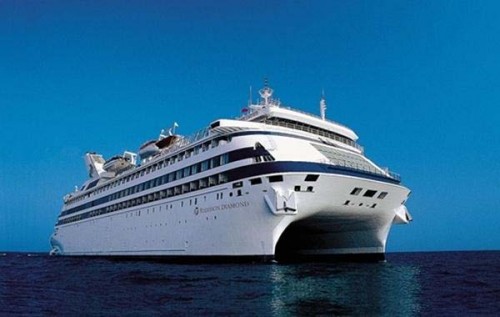
- June 19, 2023
For interior photographs of Radisson Diamond : https://www.cruiseshipodyssey.com/cruiseships/radisson-diamond/
This Finnish-flagged intimate-sized cruiseship is of the so-called SWATH-design, short for Small Waterplane Area Twin Hull.
At the time, Finnish shipbuilder Wartsila offered various types of this catamaran-type design, ranging from ferries to large cruiseship versions capable of carrying over 2000 passengers. But the 20.300GRT Radisson Diamond was the only one of all of this specific types of ship ever to be actually built. She was delivered to Diamond Cruise Company, Helsinki in 1992 and was managed by the Radisson Hotel chain.
Her building cost was $250 mio. Her crew numbered 186 and her passenger capacity was 350 guests in 172 staterooms. Two of these were 550-square-foot suites with private verandas selling for $900 a day per person.
Of the remaining standard staterooms, 120 had private verandas and 55 had enclosed verandas with a picture window offering larger inside sitting areas intead. These were priced at $600 a day per person (double occupancy) in the Caribbean, and $700 in the Mediterranean during the summer season. This expensive high-end vessel offered complimentary soft drinks and house wines at dinner and its cabin mini-bars were stocked with four free bottles at the start of each cruise. Her cabins were arranged on both sides of the ship, many of them had small balconies. They were placed above the ships twin hulls while her public spaces were located in between in the centre of the vessel.
When Radisson Diamond was shown to the travel industry during a three day shakedown cruise out of Tilbury, unfortunately the English Channel was unusually smooth, so it wasn’t possible to demonstrate her unusal stability, due to her twin hull and deep draft of 26 feet, and two pairs of stabilizers to minimize pitch, heave and roll, thus reducing the chance of seasickness. On top of this, she is was 105 ft wide, while a comparably sized cruise ship is appr. 75 feet wide.
Partly because of her width, her public rooms and hallways were more spacious than usual, adding to her luxury hotel-like onboard atmosphere and resulting in a passenger-space ratio (gross registered tonnage divided by the number of passengers) of 56 which is exceptional compared to that of competing ultra-luxury vessels like e.g. Crystal Cruises’ Crystal Harmony ’s 51.4 and the Royal Viking Sun ’s (Royal Viking Line) 51.3.
At the time she was quite technologically advanced in different ways, being one of the first cruise ships with a computerized passenger photo security system and her eight satellite phone connections, the most of any ship back then.
During her design stage, her owners Diamond Cruises Ltd. planned to use her mainly for group travel, but these plans proved to be not viable, but six smaller meeting rooms and three board rooms which could be combined to a conference center seating 150 were kept in the design. These spaces doubled as library and card rooms.
Radisson Diamond had just two lounges, The Club, a room with an Art Deco touch and luxury leather sofas and her main lounge Windows, the focal point of the ship, a three-level lounge with two bars, where for example afternoon tea was served but which at night changed into a lively disco.
Being a rather small vessel, apart from her central atrium (which looked much larger than it was in reality because of the lavish use of mirrors and its glass elevators) and her casino (three blackjack tables and 46 slot machines), the only remaining public rooms were her main open-sitting dining room with its glass wall giving passengers stunning views of the ocean aft of the ship, silver draperies and high ceiling and the complimentary specialty retaurant The Grill. Here, chefs Felice and Hanne Marra served a different Italian menu nightly. This cosy restaurant seated 50, so because of its popularity, reservations were needed.
Radisson Diamond ‘s itineraries usually did not cover large distances or a large number of ports. Because of her SWATH- dual hulled construction and her deep draft, she was an unusually slow ship. And on top of this, Diamond Cruises wanted its passengers to be able to spend more time in port with occaisional overnight stays, being able to participate in longer excursions and spend more time ashore. Also, Radisson Diamond sometimes made unscheduled stops folding out her hydraulically operated floating marina at her stern enabling guests to use her enclosed swimming pool, jet skis, or even go sailing or water-skiing.
According to Diamond Cruises, the company targeted the well-travelled, affluent, well-off guests normally sailing on Royal Viking, Sea Goddes or Seabourn ships.

In a surprise move, her Finnish owner sold her in 2004 to Stanley Ho, a well known casino owner who had her rebuilt for short gambling cruises. Only the dining room stayed intact, all other public spaces were adapted to gambling activities. She was renamed Omar Star and shortly thereafter Asia Star .

In 2012 she was acquired by Chinese interests, China Cruise Company for $45 mio. Business man Huan Weijian invested overall $80 mio in the new company, upgrading her for ca. $ 20 mio.
She has been renamed again to China Star and operates from Hong Kong on short gambling cruises, marking the end of the first SWATH cruise ship in regular cruise service.


Recent Posts

Njal Eide (1931 – 2016)
Architect Njål Eide introduced soaring

Gino Coppedè (1866 – 1927) and his brothers Adolfo and Carlo
Designers of the last of
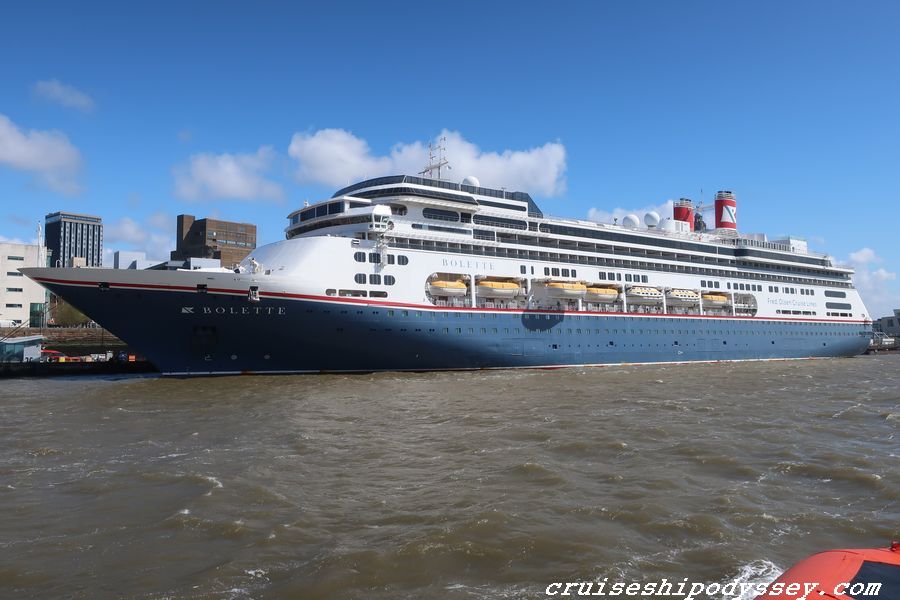
Built 2000, Fred Olsen Cruise

Brian O’Rorke (1901 – 1974)
The architect who introduced Art
- Cruise ship interiors
- Out of service
- Static ships
- Annual news review
- Ships on order
© 2003-2023 Cruise ship Odyssey, Paul Timmerman. All text and photographs (unless stated otherwise). All Rights Reserved.
Copyright disclaimer.
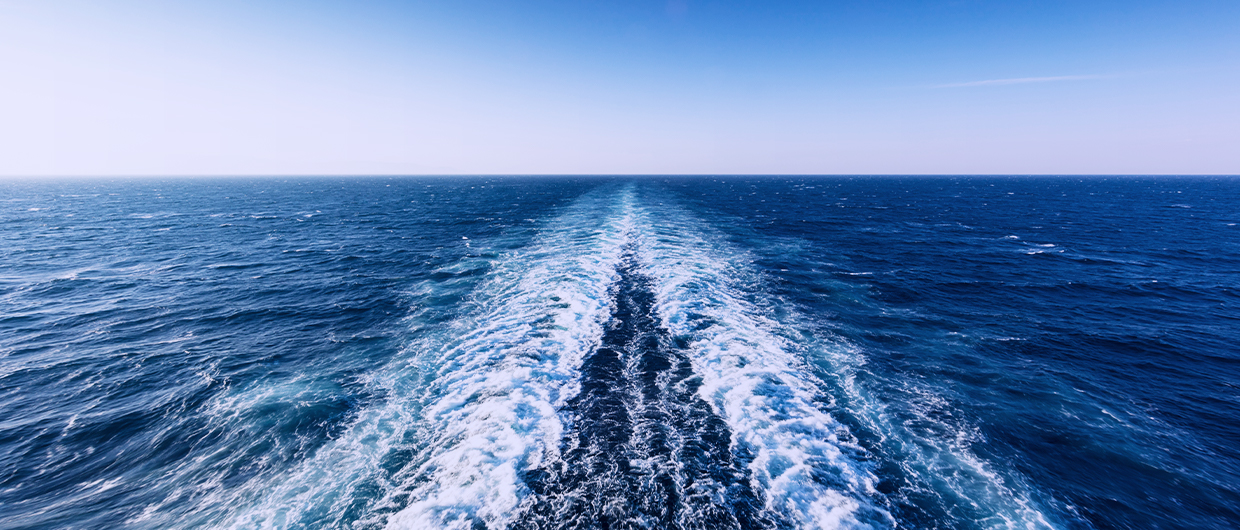
Radisson Diamond
The cruise ship originally named “Radisson Diamond” has also been known as “Omar Star” and “Asia Star” over the years. It was most recently renamed “China Star” in 2011. It is currently being used as a floating casino in the port of Hong Kong and embarks on occasional short cruises to Taiwan.
Radisson Diamond was built by MEYER TURKU with yard number 310. As the world’s first ever cruise ship with a small-waterplane-area twin hull, it was seen as something really special back in 1992. This hull design minimises the vessel’s sensitivity to wave action. And with a tonnage measurement of 20,295 GT, it’s also the largest ship of its type in the world.
Radisson Diamond, now known as “China Star”, can accommodate around 350 guests and features a spacious casino area, several restaurants and bars, a library and a show lounge.

Hull Design: Engineering a Smoother Ride
Download video, related videos.
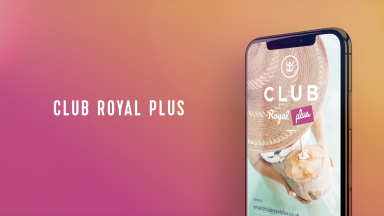

SWATH (Small Waterplane Area Twin Hull)

Cape Horn Engineering have proudly worked with Naiad Dynamics, ship motion control experts, on the CFD design optimisation for the stabilisation fins to improve the longitudinal stability of the Service Operation Vessel (SOV).
Recently launched at the CEMRE shipyard in Turkey, ‘Groene Wind’ is chartered to Siemens Gamesa Renewable Energy for the maintenance of offshore wind farms in Belgium. This is the first DP2, twin-hulled SOV in the world and the first to serve three different wind farm sites. The SWATH provides a stable platform and large, broad decks for offshore crew activities services. The new vessel significantly improves safety, comfort and workability for wind farm technicians – even in the roughest sea conditions.
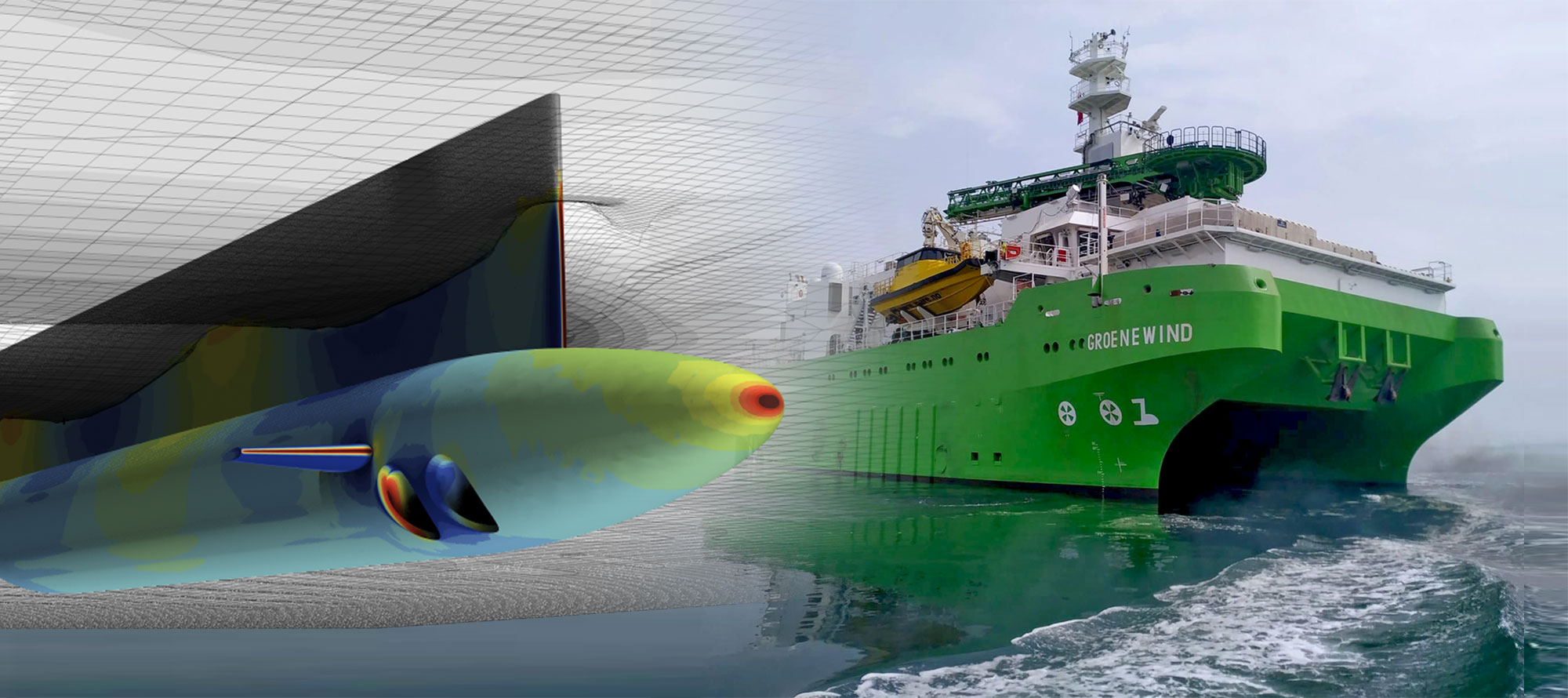
HULL DESIGN
The 60m twin-hull ship is designed to minimise the hull cross section area at the sea’s surface. The greatest benefit of this is that the waves have much less of an effect on the vessel, so it does not react as much to a heavy sea state. This improved seakeeping characteristics of the SWATH concept means there is a much more stable platform compared to a traditional monohull SOV, useful when approaching wind turbines and for safe crew transfers in waves.
The bulk of the displacement is located beneath the waves, where it is less affected by wave action. The design of SWATH is considerably more complex due to the structural complexities inherent to the design. With high surface drag, yet low wave drag, the SWATH is less susceptible to wave motion, but more sensitive to payload, which affects the pitch and the draught.
FUEL EFFICIENCY
The vessels second generation Dynamic Positioning (DP2) technology means that the vessel can hold its position in rough seas but at the same time operate with lower fuel consumption when compared to traditional SOVs. An impressive fuel consumption reduction of up to 50% can be achieved compared to a monohull SOV, further reducing the cost of wind farm maintenance. In line with her green credentials, environmental considerations are integral to the vessel design and include a waste heat recovery system and a Clean Design notation.
CFD Analysis
SWATH vessels are known for their inherent low longitudinal stability. They have the tendency of trimming bow down at maximum speed. To overcome this issue, the vessel was fitted with Naiad Dynamics’s stabilisation system – a pair of stabiliser fins mounted on the inner sides of both hulls, a short distance aft of the bow thrusters. The effects of the tunnels on the flow into the fins and thus the ability of them to perform properly and efficiently were a cause for concern.
CFD performance analysis were run for the whole vessel, including the rudders and fins, with the aim to achieve a better understanding of the correlation between rotating the fins, and regulating the SWATH’s trim. The analysis was performed over the range of operating speeds.
There were two main questions to be answered during the analysis of the SWATH; Firstly, are the installed fins capable of maintaining level trim while sailing at maximum speed, Secondly, which angle attacks give neutral lift for a range of boat speeds.
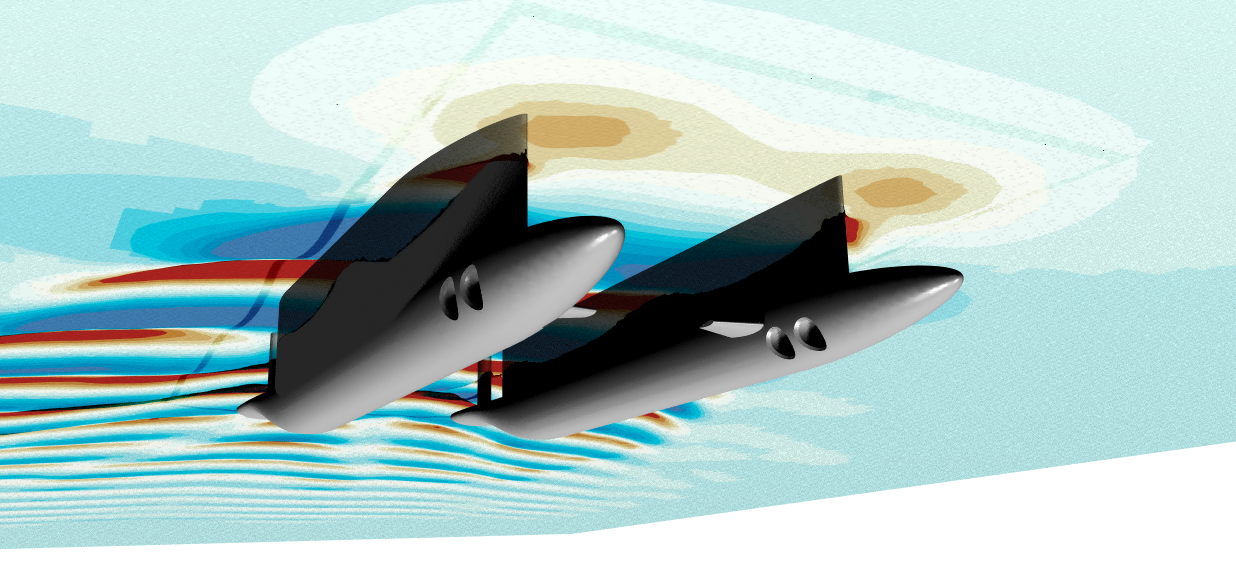
Simulation Setup
The simulations were carried out following Cape Horn Engineering’s best practices at full scale with 2 Degrees-Of-Freedom (sinkage and trim), free surface deformation, viscous and turbulent flow. We use the best in market CFD code STAR-CCM+ by Siemens PLM. The simulations are run on a High Performance Computing (HPC) cluster, the mesh used had around 5 million cells so each simulation took about XXX hours to run until converged.

Results for level trim at 12 knots
One of the investigations was to determine which fin angle would allow to achieve a 0 degree trim while sailing at 12 knots of boats speed.
The first step was to run a simulation of the model using the static centre of gravity with 12 knots of boat speed and the fin at 0 degree. This simulation showed the vessel to have a trim of -2 degrees, with approximately 20 kN of downward force generated by one fin. To reduce the bow down behaviour, the fin was rotated to a positive angle of attack (AoA) to produce more upward lift. Thus an iterative process was initiated, using linear interpolation to obtain the next best guess. This process reached a value for level trim having the fin at a moderate 7.8 deg.
Results for neutral lift
In the same manner as to find the angle of attack for level trim at 12 knots, an iterative method combined with linear interpolation was used to find the fin angles that produced zero lifting force at a rate of speeds. Run speeds of 8, 10 and 12 knots were completed first, from observations of these results, a better initial guess were used for the runs of 9 and 11 knots. The previous simulations with an AoA of zero were also considered.
While processing the simulations, linear and polynomial trends were observed for the Lift and the Trim at each speed. From these, it was possible to interpolate values for a more complete dataset. The aims of these interpolations being to provide a more detailed set of values, for Naiad Dynamic to be able to set-up the control system of the fins. A useful way of presenting the results is to link Lift generated with Trim, Fin angle and Boat speed.

Investigations on the effects of the bow thruster tunnels on the performance of the stabiliser fins
A simulation was run to see to what extent the bow thruster tunnel being just in front of the fin impacted its performance. It was decided that the simulation would be run at the maximum speed of 12 knots, as this is where any effect would be most noticeable. The fin was set-up at 7.8 degrees, which according to the previous analysis correspond to level trim when the tunnels are open. Several elements were observed. First of all, the behaviour of the SWATH was a lot more stable without the open tunnel. The oscillations observed for trim and lift were significantly smaller with the tunnels closed. Moreover, the lift generated was almost 30% larger, thus the fin angle that produced level trim with open tunnels now produced 4.3 degrees of bow up trim.
APPENDIX – Simulation Specifics
The CFD simulations are processed on a High Performance Computing (HPC) cluster running the latest version of the general purpose commercial code STAR-CCM+ by Siemens PLM. The code solves the Reynolds-Averaged Navier-Stokes Equations (RANSE), i.e taking into account viscosity. The k-omega SST turbulence model is applied with an all y+ treatment. An all y+ formulation switches from the traditional wall-function approach to a low Reynolds number approach with a blending function that is a function of the Reynolds number based on wall distance. The water-air interface is taken into account through the Volume Of Fluid modelling technique and the simulation is run in unsteady mode until a steady solution is reached and the forces and moments are converged to a tight tolerance of 0.1% over 200 time steps.
The CFD domain consists of a large box surrounding the vessel with the boundary conditions at least 2 or 3 boat lengths away from the vessel, so that no blockage effect is encountered. The symmetry of the simulation allows us to perform the analysis on half of the geometry to reduce computation effort.
The volume mesh has a resolution of around 5 million cells. They are composed of unstructured trimmed cells, i.e. predominantly hexahedral cells, with refinement prisms close to the body surfaces. The mesh also contains volume refinement zones. These are situated: around the fins to capture its motion relative to the hull; in the bow thruster tunnels to monitor the flow disruption in these areas and at the free surface to capture the waves generated by the SWATH around the hull and fins. These areas are where the flow gradients are the largest and a higher detailed representation of the geometry is required.
The effect of thrust of the propellers is considered in the trim attitude of the SWATH by applying a force in the direction of the propeller shaft. This force is obtained by considering its horizontal component equal to the computed drag of the vessel during the simulation. This method captures the main trim moment produced by the propulsion and is a good approximation if not enough information on the propeller is available.
Cape Horn Engineering Ltd.
Gatcombe House, Copnor Road, Portsmouth, Hampshire PO3 5EJ United Kingdom
[email protected] +44 (0)7821 717 383
- Yacht Racing
- Yacht & Ship Optimisation -Old, don’t delete
- Renewable Energy
- AeroSim Portal
- Ship Optimisation
- Cfd Validations
- Publications

Futuristic Radisson Diamond: 21st Century Cruise Ship Delivered By Finnyards
The $125 million SSC Radisson Diamond, promoted as the revolutionary cruise ship concept of the 21st century because of her SWATH technology, was recently formally christened in London at week-long festivities. Ceremonies for the 354- foot, twin-hull luxury ship were held at the Greenwich Buoy on the River Thames. "Greenwich is where world time begins, and with the christening of this ship, we are celebrating the beginning of a new time in the world's cruise industry ," said Christian Aspegren, president and cofounder of Diamond Cruise Inc.
Built by Finnyards Oy in Rauma, Finland, the Radisson Diamond is owned by Diamond Cruise Inc., a joint venture that includes shareholders Radisson Hotels International and Scudder, Stevens and Clark's New Europe Fund, both of the U.S.; Pohjola Insurance Co., Finnyards and Kansallis Banking Group, all of Finland; and Mitsui OSK Lines, Nippon Life and Nippon Total Finance, all of Japan.
Dame Kiri Te Kanawa, the internationally renowned opera star, served as the ship's godmother.
Other important dignitaries at the christening ceremony included: Juergen Bartels, president of Carlson Hospitality Group Inc., the parent company of Radisson Hotels International; Curtis L. Carlson, founder and co-chairman of Carlson Companies, Inc.; and Ari Tolppanen, chairman of the board of Diamond Cruise Inc.
The ship' summer itinerary offers cruises in the Baltic and Mediterranean.
It will then embark on its inaugural Atlantic Crossing from Genoa, Italy, to Ft. Lauderdale, Fla., recreating the voyage of Columbus on the 500th anniversary of the historic event. The homeport will be San Juan, Puerto Rico, where it will offer Caribbean cruises of four, five and seven days.
"We are most excited to mark the expansion of Radisson Hotels International into the cruise business with such a premier project," said Mr. Bartels. "The SSC (Semi-Submersible Craft) Radisson Diamond is destined to redefine the standard of excellence in the 'ultimate deluxe' segment of the cruise industry," he added.
According to Mr. Bartels, the vessel's stability is achieved by its Small Waterplane Twin-Hull (SWATH) design, which offers superior seaworthiness. The propulsion machinery is placed in the ship's submerged hulls beneath the waterline, minimizing ship vibration and eliminating most of the engine and propeller noise.
The 20,000-ton twin-hull Radisson Diamond has a unique four-stabilizer fin design and is 420 feet long, 103 feet wide and has a draft of 26 feet. Passenger capacity is 354 with a crew of 192. The four stabilizer fins, supplied by Brown Brothers, are some of the largest ever made, and, in combination with a KaMeWa fault tolerant control system, provide independent control of pitch, roll and heave.
KaMeWa also supplied the ship's two controllable pitch propellers.
There are two propulsion plants comprising Wartsila Vasa 6R32E and Wartsila Vasa 8R32E diesel engines utilizing heavy fuel 380 cSt/ 50 degrees C.
Auxiliary power is provided by one Wartsila Vasa 12V22HF-D diesel generator, rated at 1,740 kw, and one Wartsila Vasa 8R22HF-D, rated at 1,160 kw.
The ship features 177 luxury class cabins, most with private balconies that overlook the sea.
The Radisson Diamond offers complete facilities for corporate conferences and incentive groups. Of particular interest to business executives is the ship's state-of-theart communications technology, such as the direct-dial telephones, facsimile machines, computers, printers and the availability of satellite communication networking.
A 230-seat lounge called "Windows" located on the eighth deck at the bow offers a sweeping panoramic view of the ocean. Besides the Grand Dining Room, there is also "The Grill," a 110-seat indoor/outdoor Stern view of the uniquely shaped Radisson Diamond.
specialty restaurant overlooking the sun deck.
Other recreational facilities aboard include a 40-person casino, library, underwater viewing room, large outdoor swimming pool, jacuzzi, spa and fitness center, saunas, golf driving range and workout room. A special hydraulically operated floating marina at the stern offers a staging area for water recreational sports.
For free literature detailing the vessel construction capabilities of Finnyards, Circle 73 on Reader Service Card
Other stories from July 1992 issue
- Markey Machinery Supplies Hawser Winch For LOOP Emergency Response Vessel page: 9
- Siemens Division Supplies Integrated Electric Propulsion System For B.C. Ferry page: 9
- $75 Million Cable Ship Launched By AT&T/ Teleglobe At FELS page: 10
- U.S. Owners Could Place $5 Billion In New Ship Orders page: 11
- Stolt-Nielsen Adds Two Inland Tankers; Acquires Comex Services page: 12
- New Oceanographic Ship Christened By MSC At Avondale page: 13
- Shaver Awards Z-Drive Tug Contract To Martinac page: 13
- Atlantic Marine Delivers 1,200-Passenger 'Empress/ New Illinois Casino Boat page: 14
- U.S.-FLAG CRUISING: READY TO SAIL? page: 16
- Unitor Offers Shipowners CFC 'Phase-Out7 Concept page: 19
- DIESEL POWER page: 21
- Great Lakes Towing Overhauls Army Tug, Expands Yard Facilities page: 28
- FMC Seeks Comments On Exempting Military Rates From ' 8 4 Ship Act page: 29
- Lugger Diesels Give Passenger Boats Economical High Speed page: 32
- CG Says New Regulations Will Remove Substandard Tankers And Operators page: 32
- Future Repair & Modernization Of U.S. Navy Ships page: 33
- Distribution Of Navy Repair Work page: 34
- ECO Delivers Two PC Ship Simulators To Navy page: 36
- Eighth LSD Class Ship Commissioned At Avondale page: 37
- ANNUAL GUIDE TO FUELS and LUBES page: 38
- COMSAT Introduces C-Linksm Dial-In Service page: 46
- NOR-FISHING '92 page: 48
- Soaring Shipbuilding Demand To Challenge Shipyard Capacity page: 49
- CREDIT IN THE BUNKER BUSINESS Pitfalls, Problems, Techniques And Solutions page: 52
- Singapore's Marine Industry Posts $ 1 . 9 Billion Growth page: 52
- Singapore Buys $12 Million VTS From Norcontrol page: 54
- FMC Issues Notice For 3 Proposed Rule Changes page: 54
- Fire Safety Actuators From N e w Joint Venture/ Stockham-Ficotech page: 55
- Siemens Launches New Industrial Systems Division page: 55
- Singmarine Launches One Of WorlcTs Largest Well Stimulation Vessels For The Western Company page: 55
- Mar Ad's Management Control Over Title XI Vessels page: 56
- HEIDRUN —A Breakthrough For Concrete Technology page: 58
- AWSC Helps 2nd-Tier Shipyards Comply With U.S. Disabilities Act page: 60
- PPM Cranes To Produce First U.S.-Built Container Reach Stacker page: 60
- SECONDHAND SHIPS: Market Sector Prospects And Investment Options During The 1990s page: 61
- Ashtech Ranger Receiver: Compact GPS Solution page: 62
- HMS Marine Introduces Halon Containment Curtain page: 62
- North Sea To Black Sea Waterway Set To Open page: 63
- New Marine Turbine For Fast Ferries From Solar Turbines page: 64
- Edson Offers Free Diaphragm Pump Catalog page: 64
- Leevac To Build Casino Boat To Rodney E. Lay Design page: 65
- Finnyards Receives 2nd $130 Million Multipurpose Icebreaker Order page: 65
- Futuristic Radisson Diamond: 21st Century Cruise Ship Delivered By Finnyards page: 66
- Flender Werft Delivers 1,724-TEU Boxship page: 67
- Lakes Shipping Affected By Low Water Levels page: 67
- MarAd Publishes Final Rule On Regulated Transactions page: 68

Maritime Reporter
- Contributors
- Advertising
- Editorial Calendar
- View Record

TRID the TRIS and ITRD database
RADISSON DIAMOND - FIRST TWIN-HULL CRUISE SHIP ENTERS SERVICE
The 18 400 gt RADISSON DIAMOND built by Finnyards OY's Rauma shipyard for Diamond Cruise Ltd., is the worlds first twin-hull cruise ship. The vessel was designed to have minimised motion and noise and vibration characteristics. Principal particulars are given. See also abstract nos 91092019 and 92081767 and the following abstract.
- Motor Ship, v 73 n 864, July 1992, p 43 [3 p, 4 fig]
- Publication Date: 1992
Subject/Index Terms
- TRT Terms: Catamarans ; Cruise ships
- Old TRIS Terms: Radisson diamond
- Subject Areas: Marine Transportation; Vehicles and Equipment;
Filing Info
- Accession Number: 00703416
- Record Type: Publication
- Source Agency: British Maritime Technology
- Files: TRIS
- Created Date: Aug 14 1995 12:00AM

- Switch skin
MV Radisson Diamond – Cruise from the Past
Imo number: 9008407.
MV Saipan Star
Ex china star, asia star, omar star, radisson diamond.

© Simonwp (Kiel, 01/09/1999)
Steel twin screw motor vessel built in 1992 by Finnyards, Rauma, Finland (Yard No 310) as a (SWATH, Small-waterplane-area twin hull)) Passenger Ship
Technical Data
- Length: 131.20 m (overall) 119.71 m (between perpendiculars) Breadth: 32.00 m Depth: 15.50 m Draught: 8.0 m Tonnage: 20295 – gross/6546 – net/1300t – 1676t deadweight Engines: Two Wärtsilä 8R32E, två Wärtsilä 6R32E diesels Power: 6480kW/8810 bHP Speed: 12.5 knots (max) Capacity: 354 passengers Call Sign: OJDO………. C6OP63
- MMSI Number: 309788000 IMO Number: 9008407 Port of Registry: Helsinki/Finland 🇫🇮, Nassau/Bahamas 🇧🇸
Current AIS Location
Please note that this specific vessels AIS position data may be over an hour old and that the vessels position will only be displayed when it is within range of the VesselFinder AIS system. The AIS transponder/ship position data featured on this page is intended for information purposes only and it is in no way related to the 'Safety of Navigation at Sea' . All the AIS ship position data featured within this article is provided by VesselFinder and we are therefore not responsible for its content or its accuracy.
June 20th 1991: Launched.
February 20th 1992: Trials.
April 30th 1992: Delivered to Diamond Cruise, Helsinki, Finland. The world’s first catamaran cruise ship.
May 28th 1992: Christened in Greenwich.

© Ken Smith (Greenwich, 29/05/1992)
July 5th 1992: Maiden cruise.

© Bernd Crause (Santorini, 04/09/1993)
1997: Registered to Radisson Seven Seas Cruises, Nassau, Bahamas.

© Gavin Hall ( Dover Strait Shipping, Facebook ) (Left) © Ken Larwood (Dover, 1998)(Right)

© Benoit Donne (St Barth, 23/03/2005)
June 2005: Sold to Treasure Ocean Ltd, Nassau, Bahamas renamed OMAR STAR .
June 9th 2005: Arrived in Piraeus for major refit.
October 17th 2005: Renamed ASIA STAR .
2005: Commenced operations as a Casino Ship in Hong Kong.

© Raisuke Numata (Hong Kong, 05/11/2006)

© Ivan Meshcov (Hong Kong, 04/02/2009)
September 14th 2011: Purchased for $45M by China Cruises Company Limited, the deal being led by Chinese millionaire entrepreneur Huang Weijian, CEO of CCCL. Another $20M was spent refurbishing her. Renamed CHINA STAR .
March 9th 2012: The first ship of the new CCCL luxury cruise line.

© Bob Scott (Hong Kong, 21/02/2014)

🆕 © Lappino (Hong Kong, 11/09/2016)
October 31st 2017: To United Empire Investments Ltd and renamed SAIPAN STAR .
June 17th 2021: Laid up at Zhujian Kou Anchorage.
June 18th 2022: Laid up at Shandong.
September 21st 2022: Blown aground by severe winds near Haiwei Village, Weihai and Zhenjing, Shandong. The ship had been awaiting to dock at the Shandong Xinhong Heavy Industry for repairs and refit.
All information is believed to be correct and no responsibility is accepted for any errors or omissions. All items included in this article are subject to © copyright. We would like to take this opportunity of thanking: Bernd Crause, Benoit Donne, Gavin Hall ( Dover Strait Shipping, Facebook ), Lappino, Ken Larwoood, Ivan Meshcov, Riasuke Numata, Bob Scott, Ken Smith, Simonwp and Andreas Wörteler for their assistance in producing this feature.
Article © Nigel Thornton and Ray Goodfellow (Dover Ferry Photos Group)
MV Lygra - Past and Present
Mv merit - past and present.

Privacy Overview
This website uses cookies to improve your experience while you navigate through the website. Out of these cookies, the cookies that are categorized as necessary are stored on your browser as they are as essential for the working of basic functionalities of the website. We also use third-party cookies that help us analyse and understand how you use this website. These cookies will be stored in your browser only with your consent. You also have the option to opt-out of these cookies. But opting out of some of these cookies may have an effect on your browsing experience.

Radisson to Build Twin-Hull Ship
- May 15, 1991
Diamond Cruise Ltd. and Radisson Hotels International have announced that the second twin-hulled cruise ship, the Radisson Ruby, has now been contracted to be built by Rauma Yards of Finland.
While the sistership, the Radisson Diamond, is being constructed for $125 million and will be launched in May, 1992, the second ship will cost $140 million and will be launched in 1993.
Both vessels will be 18,000 tons and have 177 suites for 354 passengers.
No decision has been made at this time on the itineraries or homeport for the Radisson Ruby. The Radisson Diamond is scheduled for summer 1992 cruises in the Mediterranean; in the fall, she will homeport out of San Juan for Caribbean cruises.
Diamond Cruise Ltd. also holds an option on a third twin-hulled vessel.
Cruise Industry News Email Alerts
- Breaking News
Get the latest breaking cruise news . Sign up.
62 Ships | 142,732 Berths | $46.7 Billion | View
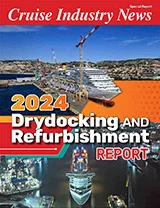
Highlights:
- Mkt. Overview
- Record Year
- Refit Schedule
- PDF Download
- Order Today

- 2033 Industry Outlook
- All Operators
- Easy to Use
- Instant Access
- Advertising
- Cruise News
- Magazine Articles
- Quarterly Magazine
- Annual Report
- Email Newsletter
- Executive Guide
- Digital Reports
Privacy Overview
- Regent Seven Seas Cruises
Radisson Diamond

By Travelcat2 , March 5, 2012 in Regent Seven Seas Cruises
Recommended Posts

I've heard such wonderful things from many of you who had the good fortune to sail on the Diamond. As you know, she was a gambling ship in Hong Kong for a while and was put up for sale. According to the following article, she will once again be a passenger ship:)
New Chinese Cruise Line to Start-Up with ex-Radisson Diamond
Friday, 02 March 2012
Cruise Industry News has learned that the ex-Radisson Diamond, the only twin-hull cruise ship ever built, most recently operating as the Asia Star gambling ship, has been sold to Chinese businessmen who intend to start a luxury cruise line.
The ship has been renamed the China Star and was purchased, officially, by Wenzhou-based China Cruise Company, which reportedly paid $45 million for the ship.
Operations may start as early as this month.
Reports from China indicate businessman Huang Weijian is behind the deal, having invested $79 million in the venture.
The 20,000-ton ship has 172 staterooms and was originally built at a cost of $250 million by Wartsila (now STX Finland) for Radisson Diamond Cruises.
Built in 1992, the 350-passenger ship sailed for Radisson Diamond Cruises, now Regent Seven Seas Cruises, until 2005.
Link to comment
Share on other sites.

Wendy The Wanderer
Oh that's really cool! The China Star, I'll have to remember that and go see where she's cruising.
Interesting to see how much she's changed. She was designed to be a kind of floating conference ship I believe, with several meeting rooms. Sure they will be gone.
The main dining room was the most amazing I've seen, right on the bow, with panoramic windows around 3 sides. Not a lot of choices for dining, however. She's small, though. That's where the notorious Don Vito's got its start--didn't care for that particular aspect. I wish I could remember the name of the CD we had, Italian guy I think. This was 2004.
She was a very inefficient ship to run, apparently--the captains grumbled constantly about that.
Here's a link I found: http://www.marinelink.com/news/chinas-cruise-first342822.aspx
And another one: http://www.wantchinatimes.com/news-subclass-cnt.aspx?id=20120305000040&cid=1202
Thanks for those links Wendy:D I found this link http://www.shipparade.com/az/China_Star/China_Star_3.htm showing pictures of the Diamond (interior) as she was in 2002. Does this bring back any memories? Really wish I had the opportunity to sail on her.

A lot of the problem was that her maximum "speed" was 11 knots...
Wow, those pictures do bring back memories! We sat in a table for two like that, 3rd down on the right, several times for lunch. The dining room was the crowning glory. Now can anybody remember what it was called? I think perhaps it was the Grand Dining Room? (Silly me, the name is right on the website with the photos! And yes, it's the GDR.)

FloatSomeMore
Our cruise on the Diamond was probably our all time favorite! We enjoyed everything, the food was great, our Finnish cabin attendant was truly the best we have ever had, the itinerary was fabulous, and we met the nicest folks. It's funny, I looked at the pictures and don't remember a lot, just the trip itself!

Our first regent (radisson then) cruise was on the diamond. We loved it, and we were hooked. That dining room was just amazing. I felt like I was in a movie with Grace Kelly, it was so elegant. Capt Dag was our captain. We went from Istanbul to Athens. I loved that trip.

Travelcat2 - Thanks for the memories! We only travelled on Diamond once, just before she departed Radisson, after many on Song of Flower. The dining room was indeed gorgeous (though I think at the stern, not the bow?), and we liked all the ship except for the peculiar main, show, lounge - a funny shape and it did not work at all. You did need a few drinks inside you before the Italian dinner with the singing waiters, but if you were feeling jolly it was good fun.
Maybe it will in future be cruising only in the Far East? Anyone know?
You might be right, GDR could have been aft.
GDR definitely was aft. And the lounge was small and not suited well for shows, but I still loved it.
Thanks for the pictures. They were great! I was on one of her last cruises in March 05. Yes, the cabins were very small but the dining room was amazing. My favorite thing was when we were in St. Barts and coming back on the tender and it went under the ship. What fun!!
Alright, y'all have made me get nostalgic and dig up some pictures! :) We sailed on the Diamond twice, the second time being the final cruise before Regent handed the ship over for transit to the far east.
Here are some pictures:
Diamond at Sea
Diamond from the aft (the large windows are the dining room)
Dining Room
On the bridge with Captain Neil Broomhall, "driving" out of Venice
WOW! Amazing photos. Now I can see how the tender went under the ship:)
Many fond memories of my Diamond cruise. One of the first voyages that were all-inclusive (test market).
Ah, great pix! Mine are all pre-digital. The open bridge was so popular!

Emperor Norton
I miss the ship and the line that operated it. Sadly the hard drive with all my photos of it had a bad case of stiction; all I have left is the ships postcard.

the ship also had a marina. on one cruise, my husband got on jetskis and had a blast going through? under? the the Diamond.
our first cruise director was Sam - and Lorraine said in October he's now with Seabourn.
Miki, the Croatian maitre'd, made the jump to Navigator and we were told he ended up on Paul Gauguin.
the Hotel Director (I guess the title is now GM?) was Fabrizio(?), an elegant Italian who has long since retired.
we have memories of a great ship... great cruises.
Right Fabrizio, I remember him. And his side-kick, another Italian--wasn't Sam I don't think. Despite loving the ship, I didn't enjoy the ambience very much, in fact--it seemed pretty cliquish, at least the CD and assistant were very much like that.

TheSeaAroundUs
Wow; she's definitely gorgeous. Maybe if I'm in China some day....
Fabrizio (and his secret gelato stash) was great, his sidekick (Italian is correct - he married an Austrian much to the chagrin of her parents) could have been harvested for oil. The French CD (at least I think that's what she was) was also an asset that is now gone from the line.
....The French CD (at least I think that's what she was) was also an asset that is now gone from the line.
are you thinking of Mimi?? I haven't thought of her for a long time but the name just came rushing back. she made such an impression! we recall staff and crew from the Diamond but not from later nor longer cruises.
count florida
My wife and I took our first Radisson/Regent cruise on the Diamond, 19 days in a back-to-back from Rome to Madera to San Juan in the fall of 2000. We had the delightful Lorraine W. as our cruise director, and the ship missed a grocery pick up somewhere, so they ran out of fresh greens and other perishables during the 9 (yup nine !) day crossing from Madera to San Juan. In those days, the dining room staff was nothing if not creative - they made intriguing salads out of everything! And lots of great jokes about it, so much so that no one really complained. It was marvelous. Anthony, later Maître’d of Signatures on the Mariner, was the assistant Maître’d or Head Waiter, but the wait staff was almost all waitresses, and they were absolutely wonderful, unmatched as a team in all our years sailing, before or since.
The big thing we remember was that we left Funchal, Madeira the day after the US Presidential Election - Bush vs. Gore - and they were still counting the votes in Florida. Very quickly we lost the satellite, and there ensued a great silence, broken occasionally with a scrap of news picked up who knows where, all very indecisive. Finally, ±9 days later, we arrived in the "New World" and again got satellite coverage, only to learn THEY WERE STILL COUNTING FLORIDA! Which as everyone knows continued on for another month or so.
This explains my moniker - count_Florida . No claim to nobility, it's just a plea for help! Reinforced later when the then-Florida Secretary of State and central figure in the vote count dispute, Katherine Harris, became our Congress-person in a messed-up ballot count here in our own congressional district. Surprisingly enough, she was a very good Representative, but not good or popular enough to win the Senate race she entered after a couple of terms. I often wish she had stuck with the House!
The counting inability became even more ridiculous when the State and/or it's county election supervisors decided to replace the hanging chad punched cards with laptop computers, which unfortunately left no trail to be audited, a very big deal, particularly here in this same CD when the current Representative ran for the first time and the results were microscopily close, without a reliable base or record to recount! No end of fun! A COLOSAL MESS AND BLUNDER!
I do not believe her name was Mimi, Ill post her picture and see if anyone remembers her name.
Diamond in the Caribbean
Typical verandah suite on the Diamond. I think Radisson was running a deal at the time and it was a massive $99 single supplement.
Did someone mention loving Don Vitos?;) This is the person that I do not believe is Mimi, but for the life of me, I can't remember her name
Was this the (in)famous Don Vito?
As I recall they'd Shanghai the passengers for their routine
I think this was the liveliest dining room I've ever been in on a cruise
It had to be fun, even the crew that'd seen it time and time again enjoyed the show
The amazing ambiance that can only be created by a bottle of cheap wine wrapped in straw
I guess she wanted some of what they were having
This topic is now archived and is closed to further replies.
- Welcome to Cruise Critic
- Special Event: Q&A with Laura Hodges Bethge, President Celebrity Cruises
- Hurricane Zone 2024
- Cruise Insurance Q&A w/ Steve Dasseos of Tripinsurancestore.com Summer 2024
- New Cruisers
- Cruise Lines “A – O”
- Cruise Lines “P – Z”
- River Cruising
- Cruise Critic News & Features
- Digital Photography & Cruise Technology
- Special Interest Cruising
- Cruise Discussion Topics
- UK Cruising
- Australia & New Zealand Cruisers
- Canadian Cruisers
- North American Homeports
- Ports of Call
- Cruise Conversations
Announcements
- New to Cruise Critic? Join our Community!
Write Your Own Amazing Review !

Click this photo by member XFrancophileX to share your review w/ photos too!
Parliament, Budapest

Features & News

LauraS · Started Thursday at 03:38 PM
LauraS · Started Wednesday at 01:39 PM
LauraS · Started Wednesday at 06:37 AM
LauraS · Started Wednesday at 05:08 AM
LauraS · Started Tuesday at 06:32 PM

- Existing user? Sign in OR Create an Account
- Find Your Roll Call
- Meet & Mingle
- Community Help Center
- All Activity
- Member Photo Albums
- Meet & Mingle Photos
- Favorite Cruise Memories
- Cruise Food Photos
- Cruise Ship Photos
- Ports of Call Photos
- Towel Animal Photos
- Amazing, Funny & Totally Awesome Cruise Photos
- Write a Review
- Live Cruise Reports
- Member Cruise Reviews
- Create New...

Types of Hulls Used For Vessels
Every marine vessel has a specific hull suited for that particular ship or boat. Over centuries, different kinds of crafts were constructed, leading to the evolution of different hull designs and types. Check out the different ship-hull types and boat hulls in this article.
Boats have been used by humanity since times immemorial. The earliest constructions included logs of wood tied together. As technology progressed, so did the size and nature of vessels. Huge ships came into the picture in the medieval era. They were constructed for carrying materials, preparing for wars, and so on.
Different crafts like sailboats or cargo ships have unique hulls; however, all hull designs have the same underlying principles.
Types of Hulls
First and foremost, let us briefly recapitulate the physics of flotation again. Any floating object is in a state of physical equilibrium due to a countering force offered by the water medium. Buoyancy or buoyant force equals the weight of volume displaced by the object. Known as displacement, it acts in a direction opposite to the object’s weight. Hence, the resultant force acting on the body equals zero. This is famously known as Archimedes’ principle.
Based on this principle of floatation, all known vessels, irrespective of size, type, purpose, complexity, operation, etc., can be categorized into three broad categories based on the kind of hulls used.
Displacement Hull: This is the simplest, earliest, and most basic hull type. Most vessels have displacement hulls, including canoes, large tankers , fishing boats, ocean liners, tugboats, or offshore support vessels. Resistance and friction define speed, depending on the partially submerged hull’s wet surface and the waves’ resistance.
Such vessels have a linear weight-buoyancy relationship; the heavier and larger the ship, the more the resistance and power required to increase speeds. Thus, a large vessel like a tanker or bulk carrier has a powering capability proportional to the hull size and displacement. Displacement hulls can be of monohull or multi-hull configurations. They have relatively fuller hull forms and are more acceptable for cruises, containerships, fighter vessels, etc.
Planing hull: They are fast vessels partially supported by the buoyancy force. The rest of the hull remains above the water surface due to the hydrodynamic lift generated. As their speed increases, the dynamic pressure increases with increasing aft draft, which helps propeller immersion, creating a forward lift. They have typical hull forms.
Semi-displacement hull: Midway between the above two, semi-displacement hulls generate dynamic lift to a certain extent. Their hull forms are similar to displacement types, and most of the weight is supported by buoyancy.
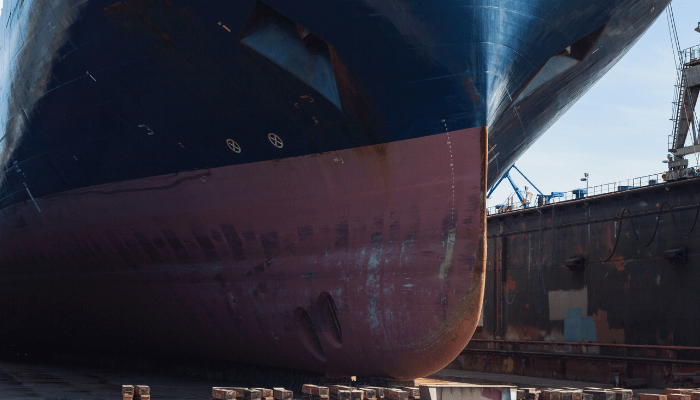
Configuration of Hulls
While we have discussed the main types of hulls, let us now look at the basic configurations of hulls available.
Monohull: Most vessels like barges or large carriers have a single hull of displacement, semi-displacement, or planning type.
Multi-hulls: A vessel having two or more hulls is multi-hulled. When there are two hulls, it is known as a catamaran, while trimarans have three hulls. Both the hulls support the superstructure and bridge deck of catamarans. Trimarans have a central hull and a secondary hull on either side.
Multi-hulled vessels are stable as the weight is distributed among the hulls. The greater the distance between the hulls, the more stable a vessel is. Another critical factor is the underdeck clearance between the two hulls. Large crossbeams, girders, and decks laterally join all the hulls, or an immense superstructure, if present.
SWATH: SWATH stands for Small Waterplane Area Twin Hull. It is a unique, modern twin-hull form but quite different from traditional catamaran configurations. For SWATH configuration, the hulls are characterized by two identical structures on either side and a remarkable under hull clearance visible above the water surface. While seeing the vessel, one can easily pose the question, given almost a hollow hull, where is the required buoyancy derived from? The answer ironically lies below!
The slender projections on either side extend underneath the water surface to large, tubular, broad cross-sections that account for the required displacement necessary to keep the vessel afloat. This typical design provides a two-fold advantage: Reduction of wave motion, drag, and resistance effects at the surface due to a narrow hull cross-section interspersed by an ample clearance; and more efficient stability.
Since the bulkier portion of the hull or structural pontoons lie well below the waterline, they are entirely free from surface effects like waves. SWATH is used in pleasure yachts, ferries, oceanographic research vessels, support vessels, small military vessels like patrol ships for coast guards, etc. However, they are not employed for larger vessels due to complex design and space limitations for cargo, heavier equipment, and machinery. Because of their typical design, they are strictly displacement type.
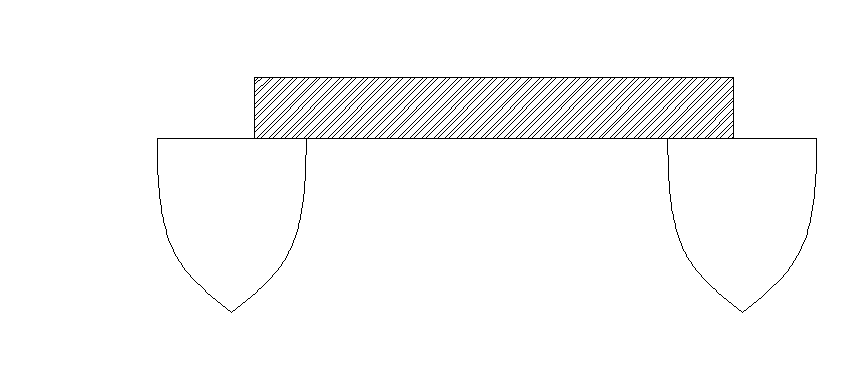
Common Hull Shapes
Ship hulls are primarily derived from traditional boat hulls. However, most hulls for larger passenger and cargo vessels are simple monohulls for cost-effectiveness and to avoid complexity in design. But depending on the speed and other requirements in terms of cargo, utilities, size, etc., they are altered in terms of fineness or different hull coefficients. Modern ship designs have a complex combination of the following hulls in varying degrees, optimizing voyage requirements, ship purpose, function, size, type, and so on.
Now let us look into some classical types of primary hull forms :
Round-Bottom Hulls or Bilge hulls are the most common forms of hulls present since the early days. Everything from a primitive fisherman’s boat or a canoe to a typical fishing trawler tends to have round-bottomed hulls. These hulls are seen almost everywhere and comprise a perfectly symmetric configuration with rounded curvatures that blend at the base region. They are typically displacement types and intended for slow to moderate speeds. However, because of their form, they encounter lesser drag forces and can offer higher rates in better sailing conditions.
Round hulls help seamlessly traverse all kinds of water bodies without much hindrance. They are efficient against wave resistances, owing to their increased submerged hull surface. However, owing to their shape, they can pose problems in stability given a high depth or draft. Often, they tend to roll in unfavorable conditions. This is not an issue for small boats or vessels, but the design parameters are carefully optimized for larger ocean-going vessels.
Round-bottom hulls are less prone to grounding. Furthermore, they offer an incredible amount of underdeck volume for cargo stowage, accommodation, and other amenities. These hulls are also known as bilged hulls because of their smooth curvature at the corners or bilge region.
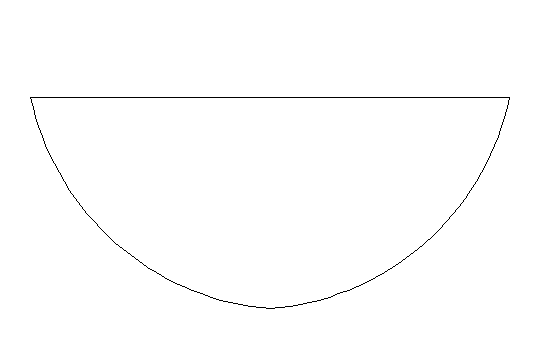
Flat-Bottomed Hulls: One of the oldest and simplest types of hull curvatures, flat-bottomed hulls have a flat base, devoid of any angle, curvature, rise, etc. A barge or small fishing boat is the most classic example of a flat-bottomed hull. They are suitable for lakes, ponds, and rivers, with calm waters and shallow drafts. In wave or choppy conditions, they not only impose a high drag but also cause problems like bottom pounding and slamming. Another significant issue with such vessels is the risk of grounding. They are perfectly displacement type and are slow. However, some high-speed river crafts are flat-bottomed.

V-Bottom Hulls are opposites of a flat or a round hull. They virtually have no bottom as the two symmetric sides of the hull intersect at the lowest point at sharp oblique angles, making its cross-section look like a simple V. They are suitable for high-speed vessels like planning crafts. They are ideal for rough conditions with high wave-breaking efficiency without the slightest effect on their high speeds. Because of their shape, they have increased hydrodynamic lift capabilities and are very apt for planning vessels. They have high propulsive requirements and are hence, equipped with high-power engines. Of course, they have less underdeck hull volume because of their shape and form. Though hydrodynamically very efficient, they also can pose problems in stability and are risky during banking or turning at high speeds.

Chined Hulls: Most modern ship designs derive from chined forms. Though slightly complex, these hulls have a solid angle or angles at the lower bottom region of the hull. Chines can be soft or hard. A hard chine has more curves and swift, rapid changes in curvature. A soft chine is composed of lower angles or a combination of smaller tips to give a smoother form.
A round-bottom hull can be considered a perfectly soft chine with a tiny number of small angles. Similarly, a flat-bottom hull is a hard chine with a zero angle!

S-Shaped Hulls are similar to rounded hulls but with a significant difference. As shown, the side curvatures join to form a sharp, pointed apex. Each hull side resembles a crooked S or a spline form. These hulls were prevalent during the old times.
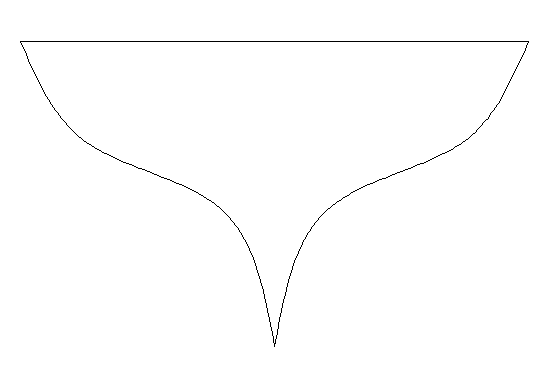
You might also want to read-
- Crane Barges Explained – Everything You Wanted To Know
- When were boats invented?
- Introduction To Different Types Of Yachts
What is Difference Between Cruise Ships And Ocean Liners?
Understanding Design Of Oil Tanker Ships

Safer ships, Cleaner Oceans – Hull Protection Systems – Vol 13
- Introduced based on the fact that there is a changing trend in the way books are read today.
- For marine engineers
- Pay by Credit Card/Debit Card/Net Banking
- Read Instantly
- Guaranteed For 30 Days
Disclaimer : The information contained in this website is for general information purposes only. While we endeavour to keep the information up to date and correct, we make no representations or warranties of any kind, express or implied, about the completeness, accuracy, reliability, suitability or availability with respect to the website or the information, products, services, or related graphics contained on the website for any purpose. Any reliance you place on such information is therefore strictly at your own risk.
In no event will we be liable for any loss or damage including without limitation, indirect or consequential loss or damage, or any loss or damage whatsoever arising from loss of data or profits arising out of, or in connection with, the use of this website.

About Author
Subhodeep is a Naval Architecture and Ocean Engineering graduate. Interested in the intricacies of marine structures and goal-based design aspects, he is dedicated to sharing and propagation of common technical knowledge within this sector, which, at this very moment, requires a turnabout to flourish back to its old glory.
Read More Articles By This Author >
Do you have info to share with us ? Suggest a correction
Related Articles
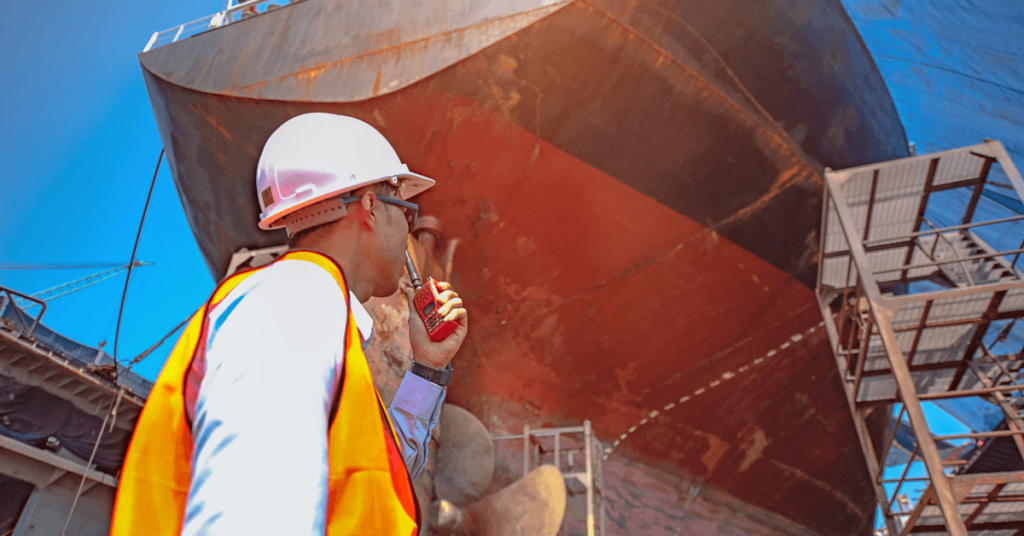
9 New Aspects of IACS Harmonised Common Structural Rules (CSR) For Ships
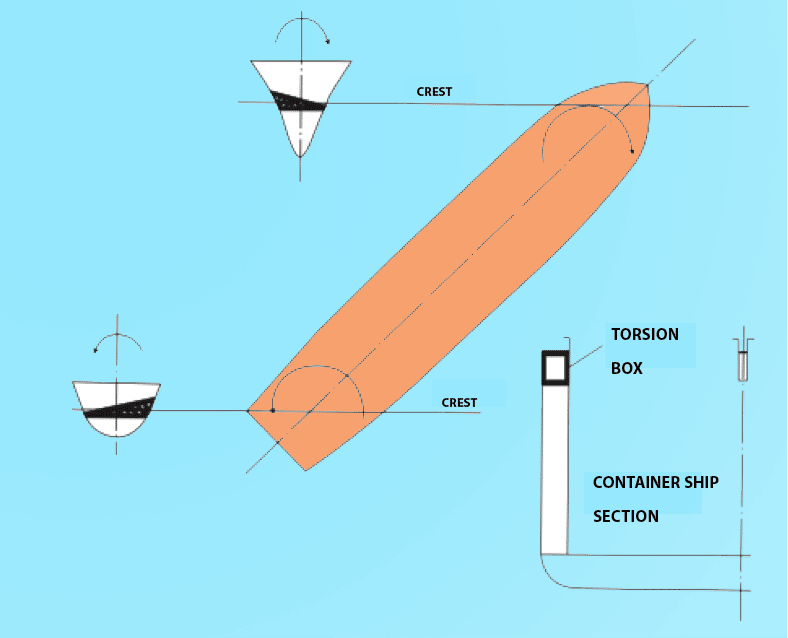
What Is The Purpose Of “Torsion Box” In Ships?
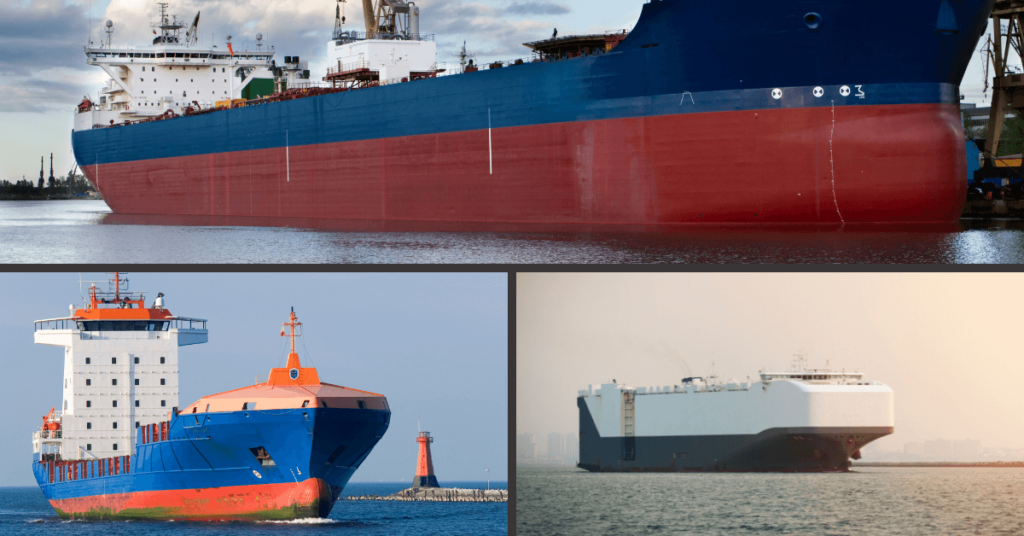
Types of Bow Designs Used For Ships
Daily maritime news, straight to your inbox.
Sign Up To Get Daily Newsletters
Join over 60k+ people who read our daily newsletters
By subscribing, you agree to our Privacy Policy and may receive occasional deal communications; you can unsubscribe anytime.
BE THE FIRST TO COMMENT
Leave a reply.
Your email address will not be published. Required fields are marked *
Subscribe to Marine Insight Daily Newsletter
" * " indicates required fields
Marine Engineering
Marine Engine Air Compressor Marine Boiler Oily Water Separator Marine Electrical Ship Generator Ship Stabilizer
Nautical Science
Mooring Bridge Watchkeeping Ship Manoeuvring Nautical Charts Anchoring Nautical Equipment Shipboard Guidelines
Explore
Free Maritime eBooks Premium Maritime eBooks Marine Safety Financial Planning Marine Careers Maritime Law Ship Dry Dock
Shipping News Maritime Reports Videos Maritime Piracy Offshore Safety Of Life At Sea (SOLAS) MARPOL
- Search Please fill out this field.
- Manage Your Subscription
- Give a Gift Subscription
- Newsletters
- Sweepstakes
This Iconic Luxury Cruise Ship Crosses the Atlantic Every Week — With Big Bands, Elegant 'Gala Evenings,' and Incredible Food
Cunard's Queen Mary 2 is one of the world's most beloved cruise ships — and for good reason. Here's what it's like to travel on the iconic ocean liner.
:max_bytes(150000):strip_icc():format(webp)/Fran-Golden-f93526529b774a9bb84cd4dd2a4b7071.jpg)
Staterooms and suites
Bars and restaurants, where queen mary 2 sails, shore excursions, amenities and entertainment, family-friendly offerings, accessibility.
Jonathan Atkin/Courtesy of Cunard Line
When my husband, David, and I boarded the Queen Mary 2 , we were laden with far more than our usual carry-on luggage. Though our trip from Southampton, England to New York City would take only a week, we had a lot to pack. We’d need his tuxedo and some of my dressiest jumpsuits — plus heels — to fit in with the crowds who do their best to dress to impress.
I also wanted to bring along plenty of drugs. We were sailing in November 2022, a time of year when the Atlantic Ocean can roar. Some passengers may enjoy the roll of the waves, but I’m not one of them. I planned to be well medicated and had brought along all sorts of motion-sickness remedies.
At the same time, we’d booked our passage on the 2,691-passenger flagship specifically to make the crossing. Operated by the venerable British line Cunard, which has been sailing for more than 180 years, the Queen Mary 2 is a true ocean liner purpose built for transatlantic trips. The season typically runs from April to December, with seven- or eight-day, one-way departures between New York City and Southampton. (Outside those dates, the ship often visits warm-weather ports, such as those in the Caribbean, or follows the sun on lengthy world cruises.)
Greywolf Studios Limited/Courtesy of Cunard Line
As befits its heritage, the Queen Mary 2 embraces tradition. That starts with a rather old-school booking hierarchy that’s key to understanding the ship: passengers have the choice of four classes of travel that determine not only the type of cabin or suite but also which dining venues will be available to them. While there’s thankfully no longer a “steerage” category, Cunard does offer four tiers to choose from, in ascending order of opulence: Britannia, Britannia Club, Princess Grill, and Queens Grill. Each class of booking has its own dining venues and rules; more on those later.
For me, the vintage vibes are all part of the fun. During my most recent crossing, I enjoyed walking the promenade deck, reflecting on the trips my grandparents and great-grandparents made when they crossed the same sea for a new life in America. Though the views might’ve been the same, their trip would’ve been far less glamorous.
Queen Mary 2 has plenty of modern accouterments such as a nightclub with DJs and a planetarium , but favorite pastimes include evenings under the chandelier of the Queens Room ballroom where a big band plays as passengers dressed to the nines show off their moves. The ship’s equally elegant two-deck main dining room for Britannia guests is another pleasurable throwback with its chandeliers, Art Deco motifs, and grand staircase.
Some dedicated fans of Cunard will only do a crossing in the late fall, when the weather turns and occasional gale force winds test the mettle of the ocean liner’s reinforced hull and four stabilizers. On my most recent trip, we had our share of gale-force breezes, to the delight of many guests on board. Thanks to the medicine I packed, the experience was better than I expected. And, no matter the weather, the band plays on.
Here's a closer look at the staterooms, suites, restaurants, and amenities available on the Cunard ocean liner Queen Mary 2 .
Queen Mary 2
- The Cunard flagship, Queen Mary 2 is the only passenger ship with regularly scheduled crossings of the Atlantic Ocean, on seven- or eight-night itineraries.
- Tuxedos and ball gowns come out during the Gala Evenings on board, when guests dress to themes like Black and White, Masquerade, or Roaring ‘20s.
- The Golden Lion is the best gastropub at sea, with its wood-and-brass bar, darts, folk music, and ale brewed exclusively for Cunard.
- It wouldn’t be a British ocean liner without tea, which is served every afternoon by white-gloved waiters who also bring out scones and Devonshire clotted cream.
The Queen Mary 2 operates with four classes of service, and your choice of accommodation also dictates which dining venues you’ll have access to. That being said, this is a luxury ship , and even the introductory-level accommodations on this ship are larger than is typical on more mainstream lines.
Britannia cabins, the smallest aboard, start from 194 square feet; inside cabins in this category don’t have windows. One step up are outside cabins, then some choices with balconies. Fifteen Britannia cabins are specifically for solo travelers. Book this category, and you’ll dine at either the early or late seating in the large yet elegant Britannia Restaurant, under the twinkling chandeliers.
Britannia Club passengers stay in balcony cabins, and dine in a more intimate restaurant, with a table reserved for them. (That means they can dine at any time.) Think of Club class as the equivalent of an airline’s premium economy option.
Princess Grill is another tier up, with 381-square-foot balcony staterooms on Deck 10, each with a separate seating area, walk-in closet, and bathtub. These guests enjoy concierge service on board and dine whenever they like in the intimate, 150-guest Princess Grill restaurant, with its upgraded menus.
First-class Queens Grill guests travel in butler-serviced suites that start at 506 square feet. (Some of the more luxurious options include duplexes with sweeping staircases named for British royal residences; the largest is 2,249 square feet.) Queens Grill passengers also have, of course, their own private fine-dining restaurant, where chefs put creative spins on classics such as beef Wellington and lobster thermidor.
The Queen Mary 2 has the distinction of being the only cruise ship that allows pets — though they can’t stay in your stateroom. There are 24 individual kennel accommodations, with indoor and outdoor exercise areas, and there’s an owner’s lounge for visits.
Christopher Ison/Courtesy of Cunard Line
When it comes to dining, much depends on the accommodation you’ve booked. Guests in each of the four classes of travel on Queen Mary 2 are assigned to specific venues, though they always have the option of visiting one of the ship’s more democratic dining rooms.
Queens Grill guests may order from a set menu or have the chef whip up whatever they are craving. Traditional items such as beef Wellington or a 28-day dry-aged T-bone are among the choices, as is lighter fare.
Princess Grill guests can pre-order such treats as Dover sole and duck à l’orange, prepared table side. Other classics, such as New York strip steak au poivre are also available.
Queens Grill and Princess Grill guests also have exclusive access to the cushy Grills Lounge, with its own outdoor terrace, for cocktails or afternoon tea service.
In everyman’s Britannia — and in the slightly elevated Britannia Club — you’ll still have white-gloved waiters, with menus that tend toward British cuisine. Look for things like rosemary and garlic grilled lamb cutlets.
In addition to the mainstays, there are several casual dining options. Kings Court is a somewhat standard buffet; personally, I prefer the Carinthia Lounge, next door, where you’ll find complimentary (and creative) small-plate presentations and a less frenetic atmosphere. (At night, the lounge features the largest collection of vintage port wine at sea.)
My other go-to for lunch is the Golden Lion pub, which has selections such as fish and chips and a classic Ploughman’s lunch of cheese, meat, bread, and pickles. One extra-charge specialty restaurant to mention is the Steakhouse at The Verandah, which is known for its crowd-pleasing Cunarder burger, with bone marrow mayonnaise.
If you don’t want to dress up for dinner, there’s a section of the Kings Court set aside for table service, with a variety of menus including Indian, Italian, and pan-Asian, available at an extra charge.
The bar scene on the ship is extensive. The Golden Lion pub pours pints, while labels including Laurent-Perrier are on offer at the Champagne Bar. At the Commodore Club, with its windows over the ship’s bow, the cocktails are named for past Cunard commodores. The nautically inspired Chart Room has a selection of zodiac-themed drinks, one for each sign. Fans of martinis, like me, will want to sample Cunard’s own small-batch bottling, produced by Pickering’s Gin.
From the end of April to mid-December the ship does seven- and eight-night transatlantic crossings. Most of these trips connect New York City and Southampton, England, the gateway city to London. Occasionally, these trips visit other ports, such as Hamburg, Germany, or Newport, Rhode Island.
Outside of “crossing season,” the Queen Mary 2 often sails in the Caribbean. In early 2026, the ship will embark on a multi-month World Cruise, departing from either New York City ( 109 days ) or Southampton ( 108 days ).
Most of the time, the Queen Mary 2 makes non-stop crossings between New York and Southampton. But, when the ship does call in port, guests can expect a standard array of bus, van, and walking tours. In Quebec City, for example, one choice is the Tastes of Quebec Walking Tour, which involves a sampling of various local flavors, including maple taffy. In Halifax, Nova Scotia, the line’s most popular excursion is a guided walk around Peggy’s Cove , a photogenic fishing village.
Pricing for these tours varies, and Cunard does not include any excursions in its rates.
As befits a ship that spends lots of time at sea, Queen Mary 2 has a packed schedule of activities: on any given day, there are more than 60 things to do before dinner.
On my recent cruise, there was almost too much to do: professional dancers taught their moves, bridge instructors led card games, and casino dealers hosted blackjack tournaments. Elsewhere, there were trivia contests and darts competitions. An on-board planetarium offered visual journeys through the solar system, while movies played on big screens (and stateroom TVs). A full lecture series had talks on just about everything: one featured a British military historian who expounded on the Empire’s defeat of the Zulu Nation while another involved a forensic medical examiner who discussed the real Elephant Man. (Some crossings even offer fencing lessons, for an added fee.)
There are five pools on Queen Mary 2 . The Terrace and Splash Pools are outdoors, while the Pavilion Pool has a retractable roof, which allows for all-weather enjoyment. The shallow Minnows Pool is reserved for kids; the spa has a delightfully warm thalassotherapy option. (Additionally, the spa has a sauna, various treatments, and salon services.)
Another hangout, and one of my favorite spots, is the ship’s library, the largest at sea with some 9,000 volumes — and epic ocean views.
At night, a resident team of singers and dancers puts on theatrical productions featuring show tunes; there are also visiting comedians and cabaret artists doing their thing. The bars and lounges are also full of live music, including jazz. On select cruises, The Royal Shakespeare Company performs and does workshops for guests.
On Gala Evenings, the place to see and be seen is the Queens Room ballroom. (For those less confident in their steps, dance hosts are available as partners.) If ballroom isn’t your thing, there’s a discreet door in the back, behind which is the G32 dance club with a mix of DJs and classic rock tunes from a live band.
From time to time, Queen Mary 2 hosts themed crossings, whether that’s bringing aboard members of the British National Symphony Orchestra or hosting a Literary Festival at Sea, with prominent authors.
The Queen Mary 2 Isn’t the most kid-friendly cruise ship, but families do hop aboard, particularly during summer and the end-of-year holiday season. Various sections of the ship are designed for age-appropriate activities led by staff: The Play Zone, for ages 2 to 7, includes an indoor playroom and outdoor area with kiddie cars and tricycles. (Infants from 6 months up to 2 years are welcome to visit with their parents.) The Kids Zone, for ages 8 to 12, is equipped with foosball and game consoles. Teens can enjoy supervised time in the G32 disco and also have their own video gaming area.
Cunard has a complimentary Night Nursery that cares for children aged 6 to 23 months, from 6 to 11 p.m.
The Queen Mary 2 has 32 fully accessible staterooms and suites, spread across the Britannia, Princess Grill, and Queens Grill categories. These accommodations have wide doorways into the stateroom and bathroom and sufficient floor space for maneuvering a wheelchair or mobility scooter. There are flush thresholds between the bathroom and stateroom, and, for those rooms with balconies, ramped access to the outdoor area.
While most public areas have level or ramped access, there are raised thresholds throughout the ship, particularly in doorways for accessing outdoor deck areas. Pools have a hoist, the use of which can be reserved with 24 hours’ notice.
Cunard has additional advice for those with particular accessibility concerns on its website.
Related Articles

The 9 best Alaska cruises for every type of traveler in 2025

Even with a season that only runs from April through October, Alaska draws roughly 40 big cruise ships and dozens of smaller cruise vessels each year, making it one of the most popular cruise destinations in the world after the Caribbean and Europe. The best Alaska cruises range from off-the-beaten-path voyages on vessels carrying fewer than 100 passengers to weeklong jaunts through the Inside Passage aboard megaships that hold thousands.
It can be hard to figure out which cruise ship will deliver your idea of a "bucket list" experience in the Last Frontier. A lot comes down to your travel style, preferences and budget.
Some travelers demand luxury Alaska cruises , while others don't mind going less fancy if it means close encounters with bears and other creatures in the wilderness. Some look for romance, while others want to introduce the kids or grandkids to glaciers and eagles, gold panning and sled dogs.
For cruise news, reviews and tips, sign up for TPG's cruise newsletter .
The good news is there's a ship in Alaska for you no matter your taste or style. Here's a beginners guide to the best Alaska cruises to help you narrow down your choices.
Best for megaresort fans: Anthem of the Seas
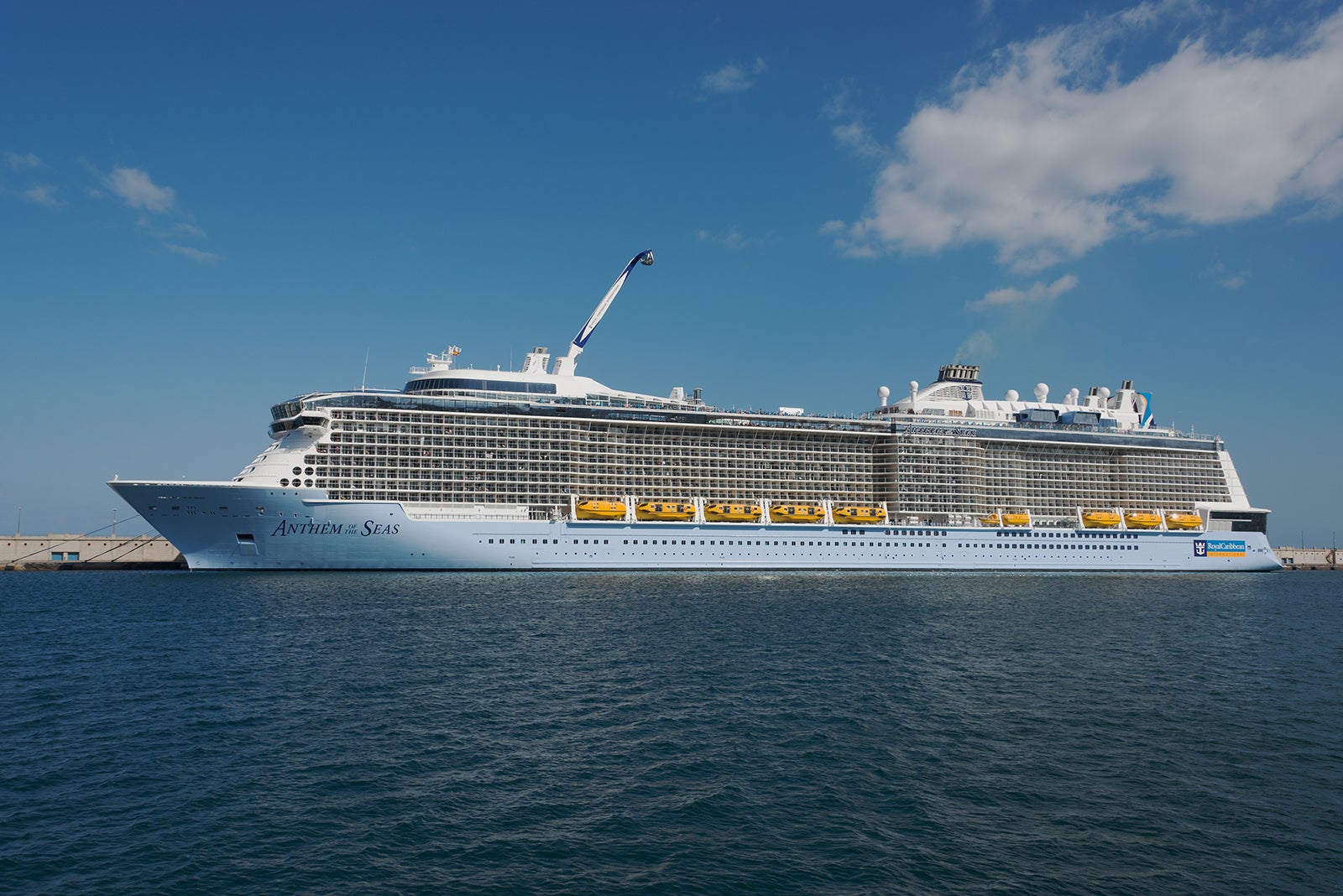
Royal Caribbean is known for its floating megaresorts, which carry thousands and are big on amenities, glitz and a certain amount of glamor — think flashy casinos, high-tech shows and lavish spas. Dining and drinking venues number in the dozens, while amusement park features thrill the kids and adrenaline-seekers.
The line always stations one or two Quantum Class ships in Alaska for the season. On the 4,180-passenger Anthem of the Seas, you can order a drink from a robotic bartender, try simulated skydiving or surfing experiences, and take a ride in a glass capsule that travels high above your ship on a mechanical arm — a weird and wonderful way to see the Alaska scenery. Adults can linger in the glass-walled Solarium, relaxing in the indoor pools and whirlpools, while their kids zoom around the SeaPlex in bumper cars.
Anthem of the Seas sails round-trip from Seattle on seven-night cruises, but the exact itinerary varies by week. The ship cruises Endicott Arm for scenic views of Dawes Glacier and typically visits two Alaska ports and Victoria.
Related: A beginners guide to picking a cruise line
Best for land and sea adventures: Koningsdam
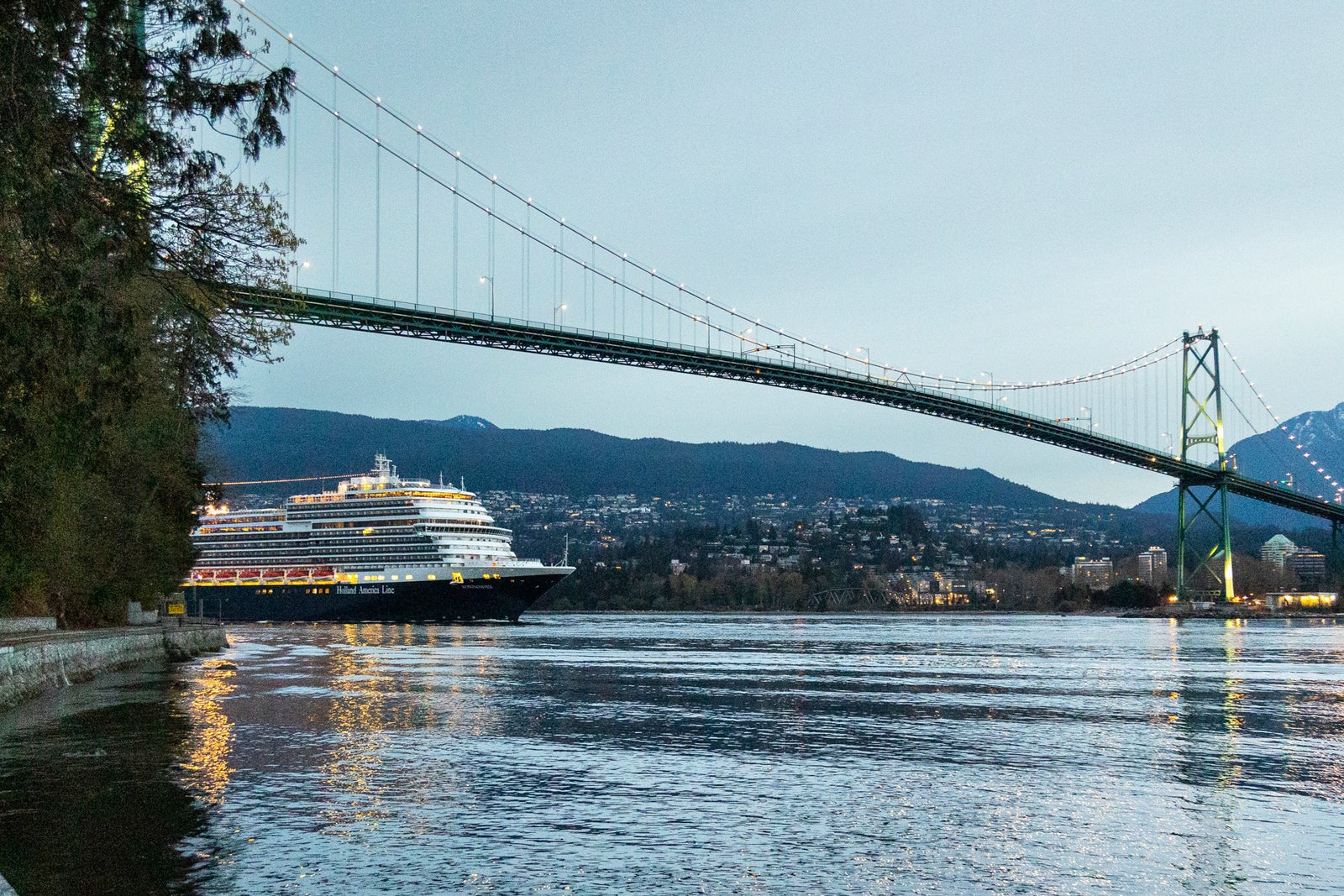
Holland America Line has offered Alaska cruises for 75 years and is clearly a market leader. The line tops the list in terms of cruises, as well as cruisetours, which combine time sailing with overnight stays on land. The company operates its own lodges, rail cars and motorcoaches for exploration of Alaska's interior and beyond.
Related: The coolest things to do on an Alaska cruise
The line will send six ships to Alaska in 2025, with tour offerings to Denali, Fairbanks and Anchorage. However, it's the 2,650-passenger Koningsdam that offers some of the most interesting cruisetour itineraries out there.
The ship offers nine- to 14-night cruisetours that head into the Canadian Yukon, following the route of the Klondike gold rush from Alaska to northwestern Canada. You'll sail from Vancouver to Skagway, with a stop in Tracy Arm or Glacier Bay National Park, then travel to Whitehorse and Dawson City in the Yukon before continuing on to Fairbanks (the gateway to Arctic Alaska), Denali National Park (home to North America's largest peak) and Anchorage.
On board, enjoy live music at Billboard Onboard and B.B. King's Blues Club, play a game of pickleball on the outer deck or enjoy fine dining at numerous restaurants serving sushi and Asian cuisine, steak, seafood, Italian fare and Dutch treats.
Best for families: Disney Wonder
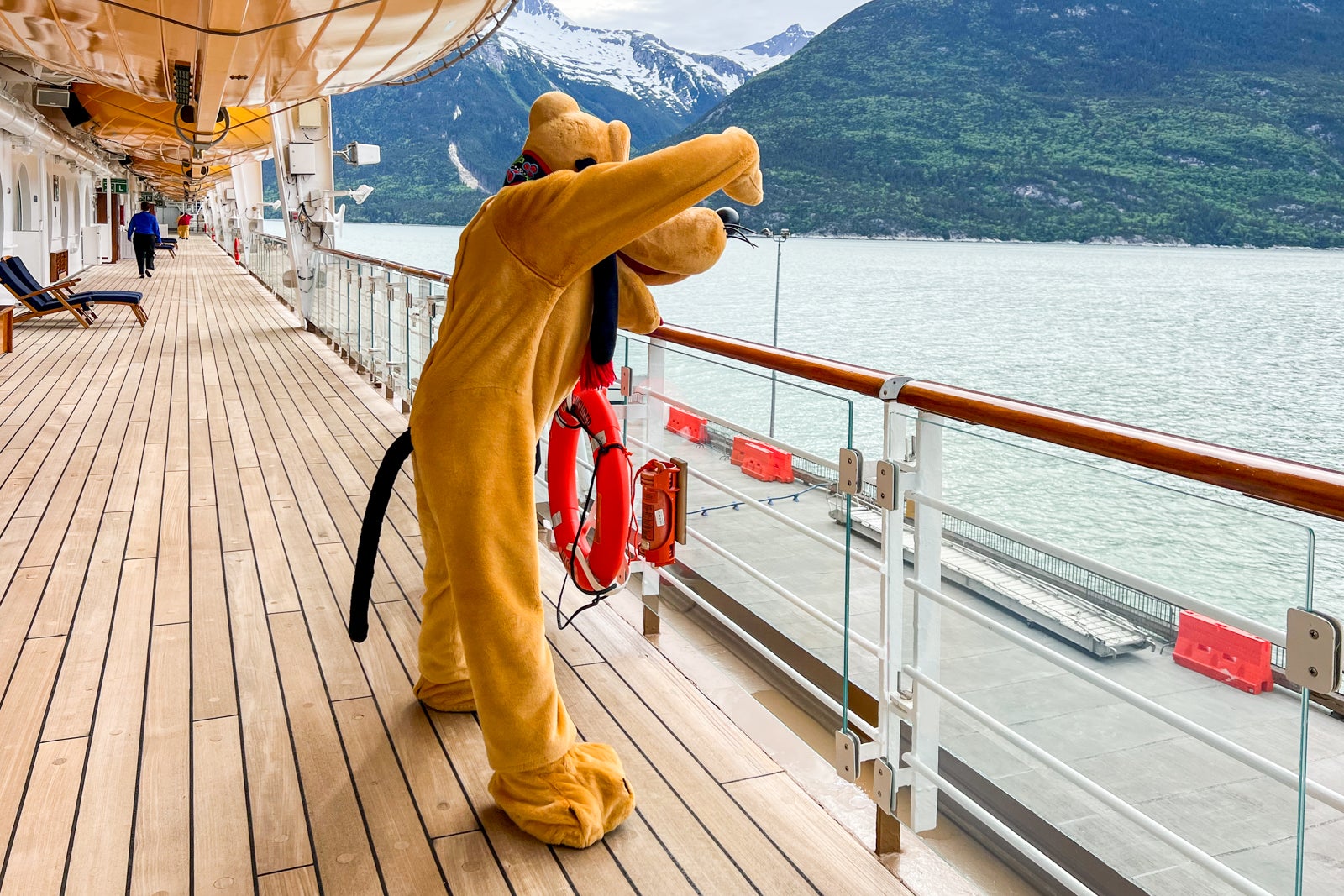
If you're traveling with young kids in Alaska and want an activity- and entertainment-packed experience, make a beeline for Disney Cruise Line and its Alaska-based Disney Wonder. The ship has an extensive children's program, high-quality entertainment and such activities as waterslides and play areas.
Cabins are designed with families in mind and include split bathrooms (one with a toilet and sink, the other with a shower/tub combo and sink), as well as pullout sofa beds and bunks to sleep four in a cabin. Disney-themed restaurants and attentive wait staff take the stress out of family mealtimes.
Bonus: Everyone's favorite Disney characters will be on board for shows and meet-and-greets. Goofy might even make an appearance as you admire soaring eagles, blue icebergs and glaciers.
Related: Best cruise lines for families
Best value Alaska cruise: Radiance of the Seas
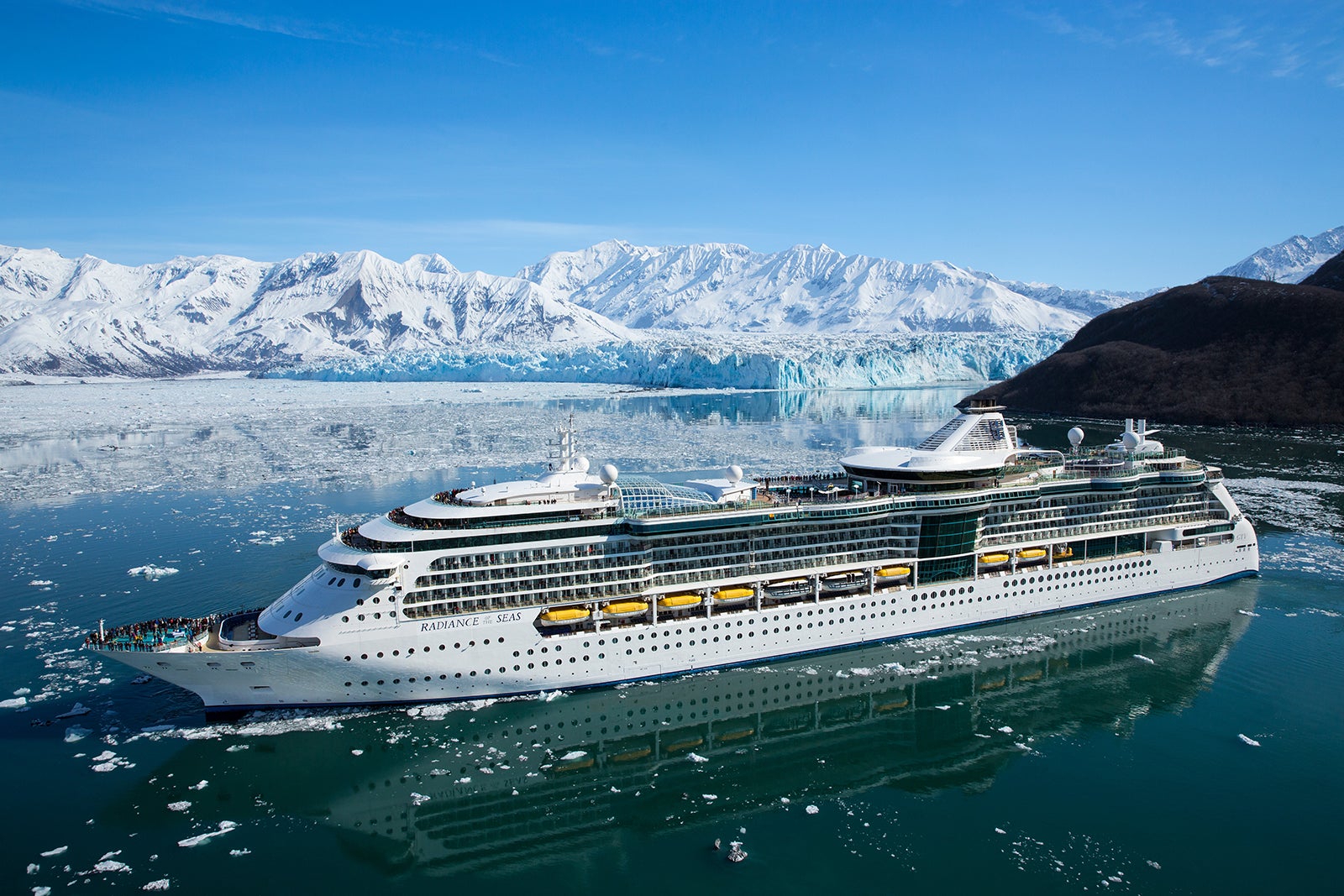
When cruise lines send a fleet of ships to Alaska for the summer, the older, smaller ships tend to offer more reduced prices than you'll find on the lines' larger and newer ships.
Royal Caribbean's 23-year-old ship Radiance of the Seas mainly sails weeklong, one-way cruises between Vancouver and Seward, Alaska, with prices below $100 per person, per night, for inside cabins on many departures.
However, its late-season September 2025 sailing from Seward to Vancouver is the cheapest weeklong Royal Caribbean Alaska cruise you can book for next year. At the time of this guide's posting, it started at just $417 per person for an inside cabin. (Generally, you'll find better Alaska cruise deals from April to early June and in September and early October than you will in the height of summer.)
The ship might not have all the crazy attractions of its Alaska counterpart Anthem of the Seas, but it still offers kids clubs, outdoor movies, an indoor adults-only solarium, a rock-climbing wall, themed parties and multiple dining venues — making it a great value for the price.
Related: Best time to cruise Alaska
If you're looking for other surefire ways to save, inside and ocean-view cabins are often much cheaper than balcony cabins on Alaska cruises. Those private verandas are highly desirable, with everyone seeking views of the wilderness, snowcapped peaks and glaciers. As those reserves get low, the prices tend to get higher.
Bargain seekers should either book early for these accommodations or choose inside, outside or guarantee cabins (where you don't pick your room location) to save more.
Best for Alaskan adventure: Wilderness Legacy
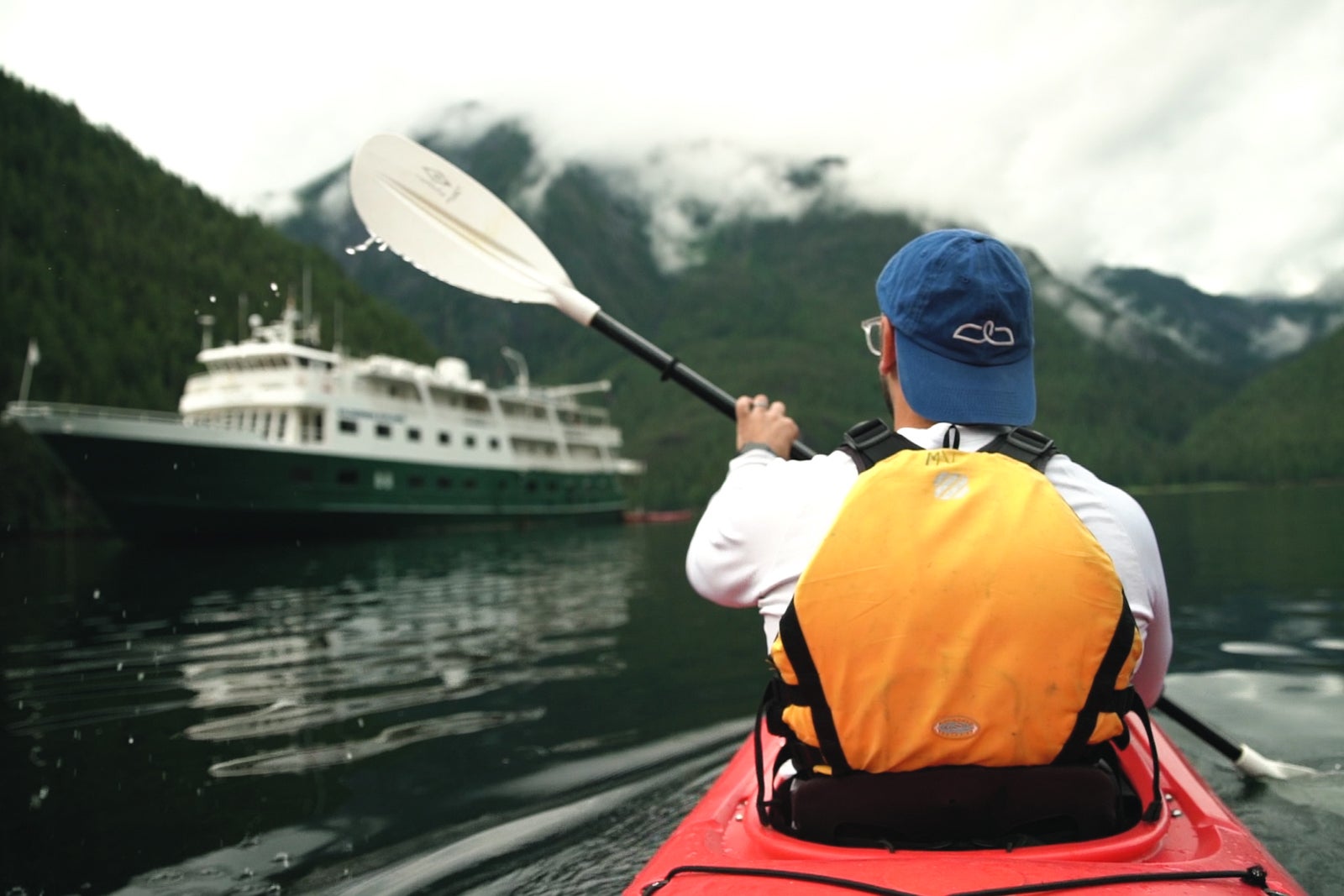
If adventure is what you crave on an Alaska cruise, you should seek out the small ships of UnCruise Adventures. All of the line's itineraries boast an active component, but its "Wild, Woolly and Wow" itinerary claims to be "the most active back country itinerary" of UnCruise's 2025 Alaska cruises.
A day aboard the 86-passenger Wilderness Legacy might start out with a hike through a forest to see waterfalls followed by a late-day kayak adventure in Thomas Bay. Or, you might enjoy a bit of scenic cruising by LeConte Glacier (where the big ships don't go) by small boat or even stand-up paddleboard. Big ships can only offer deckside viewing of the marvels of Glacier Bay, but UnCruise Adventures sends its ships to the rarely visited outback.
Mountain biking, whale watching and glacier hiking are all on your cruise agenda. Just when you're ready for a rest, guided skiff tours will take guests in search of Alaskan wildlife in remote bays and secret coves.
The seven-night itinerary sails round-trip from Juneau.
Best for multigenerational groups: Discovery Princess
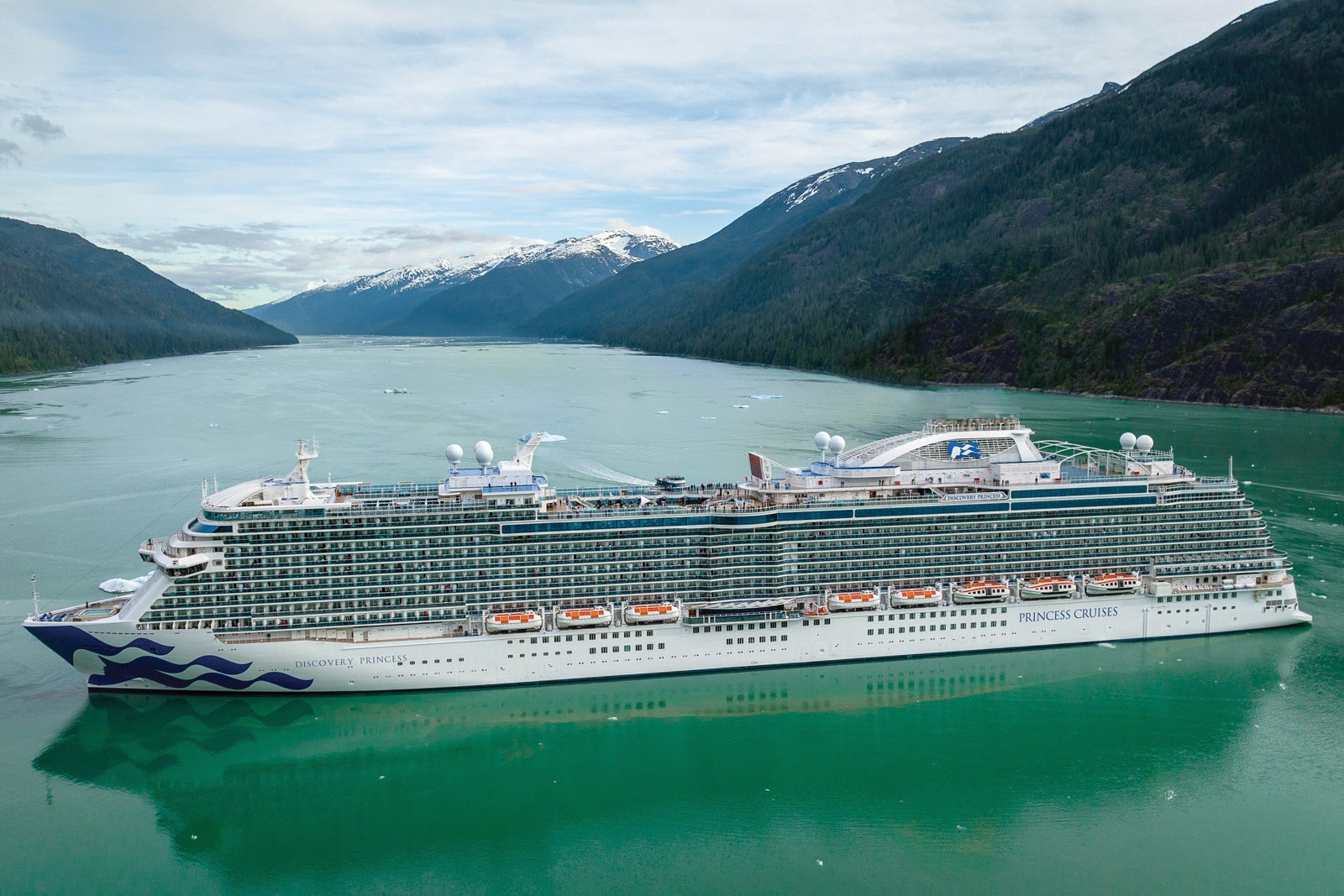
Alaska has become a hot spot for multigenerational family travel, with grandparents taking their kids and grandkids of all ages on a memory-making holiday. Princess Cruises is a line that offers something for everyone, and its Alaska-based Discovery Princess is our top choice for family reunion groups.
The 2-year-old Discovery Princess sails round-trip to Alaska from Seattle, a convenient U.S. home port for families to fly or drive to. Its "North to Alaska" program will delight kids with totem pole decorating, sled dog puppies in the ship's Piazza and northern lights viewing in an on-ship planetarium. Parents and grandparents will appreciate local seafood on restaurant menus and onboard cultural programming with Alaska residents.
While the kids enjoy Discovery Princess' spacious children's and teens clubs, the adults might linger over a craft cocktail or enjoy a massage in the onboard spa. The family can come together for meals in a variety of casual and fine dining restaurants, and enjoy original production shows as the ship sails between ports.
Best for luxury lovers: Seabourn Quest
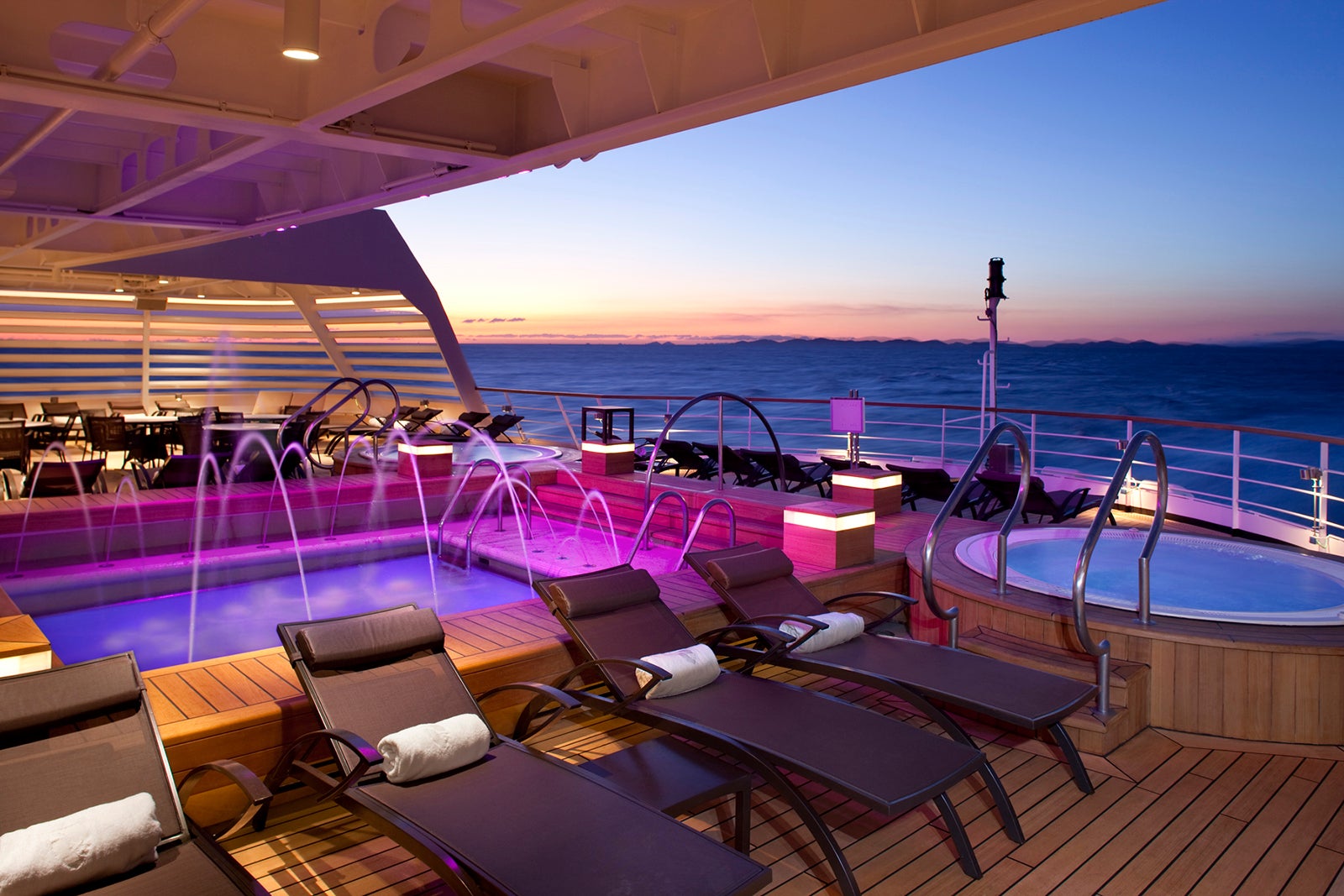
If you envision sipping Champagne as you watch a glacier thunderously calve into the sea, consider booking an all-inclusive luxury cruise on a Seabourn ship.
The 458-passenger Seabourn Quest throws a dash of adventure into its luxurious surroundings. In addition to offering passengers complimentary Champagne and caviar and housing them in spacious suites, the ship boasts an onboard expedition team and does a posh version of expedition cruising in Alaska, using inflatable Zodiac craft and kayaks.
Seabourn calls its program Ventures by Seabourn. Experts on board these sailings include naturalists, biologists and other scientists who are members of the expedition team. They lead the outdoor activities and provide passengers with a deeper insight into Alaska. Once guests finish communing with nature, they can indulge in gourmet cuisine in multiple restaurants, enjoy a complimentary cocktail or relax in an upscale spa.
Seabourn Quest sails both one-way, weeklong itineraries between Vancouver and Juneau and two-week round-trip itineraries from Vancouver. It visits popular Alaska ports like Ketchikan and Sitka, as well as less-touristed destinations like Wrangell, Prince Rupert (a port city in Canada) and Rudyerd Bay.
Related: The best luxury cruise lines for elegance and exclusivity
Best for off-the-beaten-path travel: National Geographic Quest
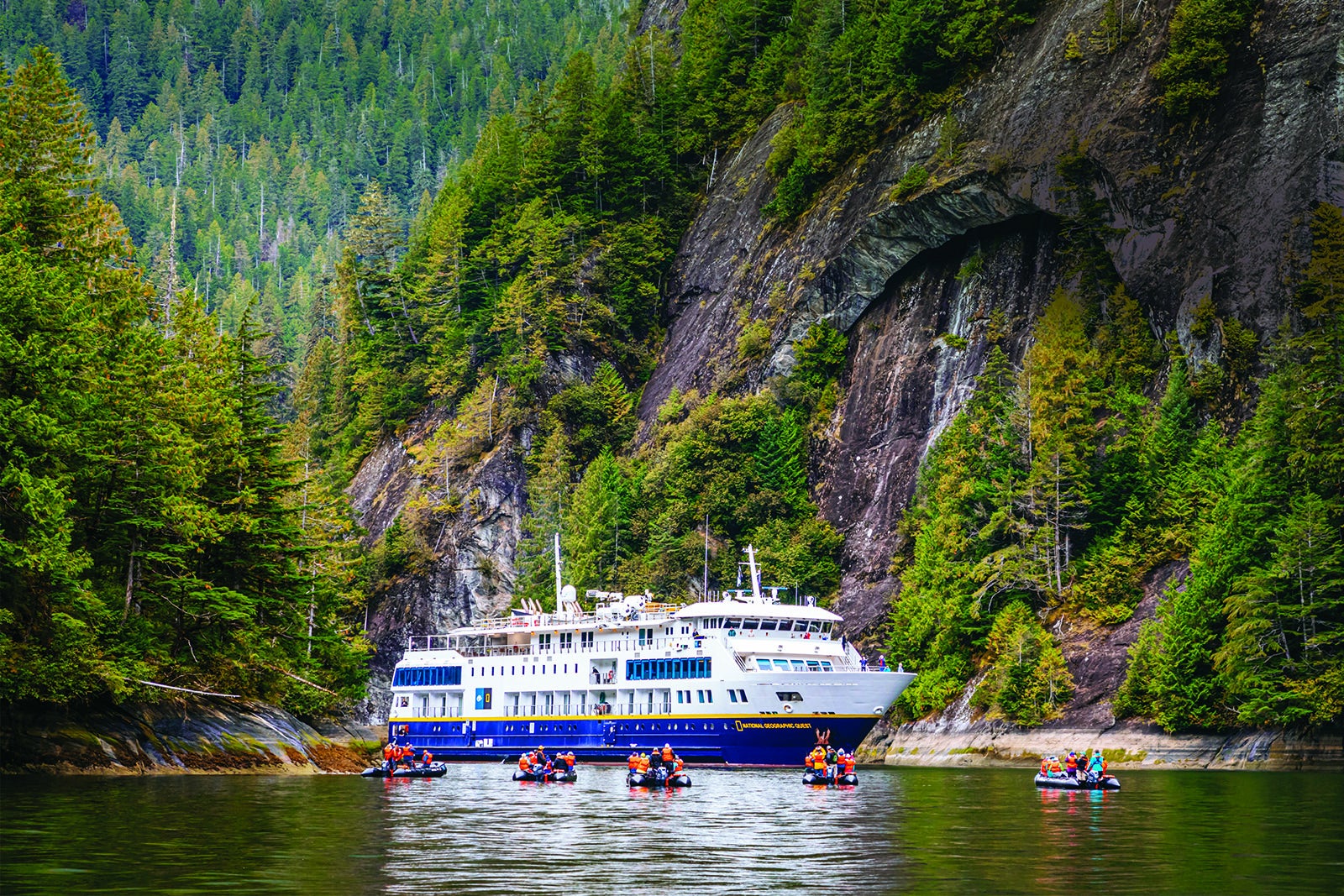
If you're looking to get away from the mega-cruise-ship crowds, the best Alaska cruise for you might be with Lindblad Expeditions. The 100-passenger National Geographic Quest (and its twin, National Geographic Venture) frequents off-the-beaten-path destinations in Alaska on weeklong itineraries between Juneau and Sitka.
Guests can explore the small fishing town of Petersburg or search for orca and humpback whales in Frederick Sound. Lindblad has special permits to bring passengers into the wilderness of Glacier Bay National Park and Preserve and the Tongass National Forest, beyond what the big ships can offer. A hike on Chichagof Island is the perfect opportunity to spot bald eagles in the wild.
One day is even dedicated to serendipitous exploration. The ship's captain has the flexibility to seek out the best remote islands and bays for beachcombing, tide pooling, hiking and kayaking adventures.
As long as you don't mind a mellower environment where lectures and impromptu guitar singalongs replace casinos and show productions, you'll be right at home as you deeply experience coastal Alaska.
Best for solo travelers: Norwegian Bliss
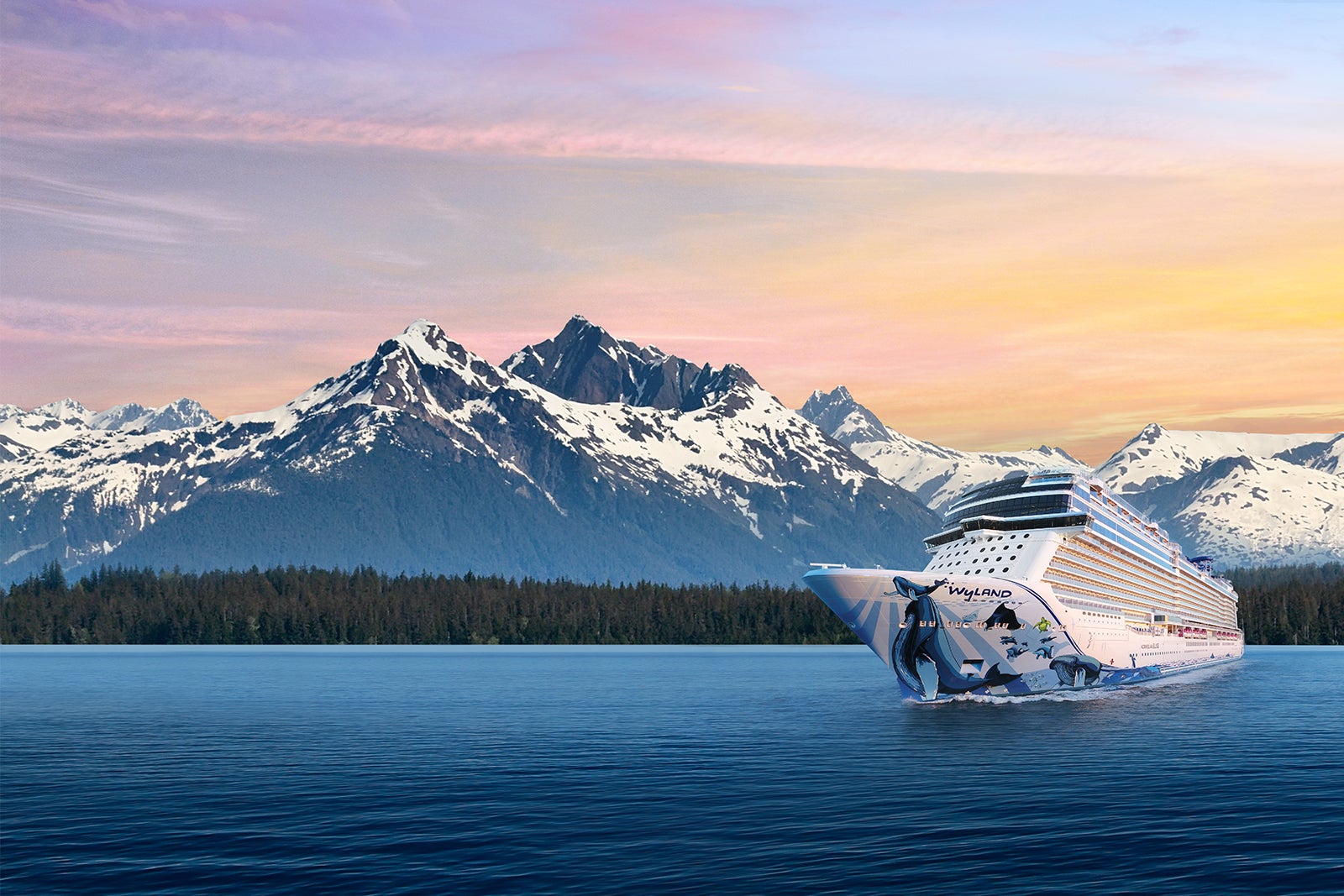
Solo travelers don't always have to pay double to cruise Alaska on their own. Several ships feature cabins designed and priced for one. Several Norwegian Cruise Line ships feature cozy studio cabins designed and priced for one person, and the 4,004-passenger Norwegian Bliss offers 82 solo rooms on its round-trip Seattle cruises to Alaska.
These solo cabins get our vote because they're located in a complex where a private lounge encourages mingling. Lone travelers can also meet their shipmates while waiting to hop into a race car on the ship's go-kart track, at a showing of "Jersey Boys" or over a muddled drink at the Sugarcane Mojito Bar.
The ship sails seven-night cruises from Seattle, visiting Dawes Glacier, Sitka and Icy Strait Point, as well as Juneau, Ketchikan and Victoria, British Columbia.
Planning a cruise? Start with these stories:
- The 5 most desirable cabin locations on any cruise ship
- A beginners guide to picking a cruise line
- The 8 worst cabin locations on any cruise ship
- The ultimate guide to what to pack for a cruise
- A quick guide to the most popular cruise lines
- 21 tips and tricks that will make your cruise go smoothly
- Top ways cruisers waste money
- The ultimate guide to choosing a cruise ship cabin

Cruise ship lifeboats and rafts: How your ship is prepared for an emergency
MSN has partnered with The Points Guy for our coverage of credit card products. MSN and The Points Guy may receive a commission from card issuers.
Do cruise ships have enough lifeboats for everyone?
It’s a question that comes to many cruisers’ minds, especially if they’re hesitant about sailing across oceans and seas, far from land.
You can rest assured that cruise lines have many safety systems in place in the rare instance that a major emergency occurs at sea. Among these systems are, of course, the brightly colored lifeboats that you’ll see lining the sides of your ship. Not only are they there to carry passengers to safety if the ship needs to be abandoned, but they’re also used as tender boats in a port where the ship can’t dock at a pier.
For cruise news, reviews and tips, sign up for TPG’s cruise newsletter .
You may have other questions about lifeboats, either from curiosity or safety concerns. How reliable are the small vessels? What supplies are on board? Do they have restrooms?
Here are the top things to know about cruise ship lifeboats, so you’ll feel safe and confident when heading out on your next voyage.
What does a lifeboat look like?
Lifeboats are orange or yellow watercraft that you’ll find lining the sides of the ship. You’ll find two main types of lifeboats on many cruise ships: enclosed lifeboats and lifeboat tenders. The majority of cruise ship lifeboats are enclosed lifeboats, which are tough and built with superior watertight integrity, with the ability to easily right themselves if tossed around by rough waves.
Lifeboat tenders are partially enclosed and are designed for two main functions: to serve as a lifeboat if needed and to ferry guests from the ship to the shore during a port call where the vessel can’t dock. Lifeboat tenders are more expensive to maintain than traditional lifeboats, so cruise ships will usually have just enough lifeboat tenders to operate port tender service while the rest are the standard enclosed lifeboats.
The interior of a lifeboat includes rows of seating, which may or may not have a seatback. A steering area with windows and a hatch is located toward the top of the vessel. According to lifeboat manufacturer Fassmer, enclosed lifeboats have no windows besides those in the steering area, while lifeboat tenders have windows for viewing the surroundings from the seats. These windows do not open.
Fun fact: When Disney Cruise Line launched in the ‘90s, regulations required all cruise ship lifeboats to be orange. However, Disney wanted the exteriors of its ships to match the colors of Mickey Mouse, so it requested an exemption to paint its lifeboats yellow to match Mickey’s shoes.
The U.S. Coast Guard granted the unique request, and the lifeboats were painted in Mickey’s yellow, Pantone 99, which is a patented color that only Disney can use. Since then, other lines, such as Royal Caribbean and Costa Cruises , have painted their lifeboats yellow.
What’s the typical capacity of cruise ship lifeboats?
The maximum capacity of a cruise ship lifeboat is 150 people, according to the International Maritime Organization’s International Life-Saving Appliance Code. Most cruise ships have lifeboats that can hold this maximum number of passengers because it is easier, more cost-effective and takes up less space to have fewer large lifeboats instead of a greater number of smaller ones.
Despite the LSA’s 150-person capacity limit for lifeboats, an exception allows for larger lifeboats on some of the world’s largest cruise ships.
Related: Are cruises safe? Here’s what you need to know about cruise ship security and safety
Royal Caribbean’s massive Oasis of the Seas, which holds 8,880 passengers and crew members in total, was the first ship to use 370-person CRV55 catamaran lifeboats (or “rescue vessels”), designed and built by marine life-saving equipment company Umoe Schat-Harding. The enclosed vessels are unique in that they can be lowered directly from their storage position on the ship into the water (no moving outward needed), and passengers can board on two levels simultaneously, reducing the loading time. Their catamaran-style hull increases stability, while twin diesel engines and twin propellers allow these “mega” lifeboats to move at speeds of up to 6 knots.
On a cruise ship, there must be enough lifeboats to accommodate 37.5% of passengers and crew members on either side (75% total), according to the International Convention for the Safety of Life at Sea. What happens to the other 25%? This leads us to our next question.
Do cruise ships carry inflatable life rafts?
The remaining 25% of passengers that can’t be accommodated in the traditional lifeboats can use cruise ship inflatable life rafts. These are generally designated for crew members, while guests will board the lifeboats first — though rafts can also be used for guests if necessary.
Collapsible cruise ship life rafts are stored in fiberglass canisters and usually utilize a high-pressure gas to automatically inflate once deployed. While lifeboats have motors, life rafts do not. They do, however, have oars. Ships may also carry rigid, noninflatable life rafts, but they aren’t as common for large cruise vessels.
On newer cruise ships, life rafts may be used with a Marine Evacuation System, which utilizes a fully enclosed inflatable spiral slide to transfer passengers from the embarkation deck to an automatically inflated raft in the water.
If some lifeboats become damaged or can’t be lowered during an emergency, cruise ships have extra life rafts to pick up the slack. SOLAS requires that there are enough additional life rafts for 25% of the ship’s capacity. Cruise ships have also been designed to allow lifeboats and life rafts to deploy even if the ship is listing up to 20 degrees.
Where are lifeboats located on cruise ships?
Lifeboats are located outside on both sides of the cruise ship, typically stored on or just above one of the middle decks with an outdoor promenade so passengers can easily board them. This spot is ideal because it’s a central location for both the upper- and lower-deck cabins, as well as many public indoor and outdoor venues and amenities.
It also works because it keeps the lifeboats high enough out of the water that they won’t be in the way when the ship docks and most likely won’t be affected by rough waves. On the flip side, it keeps them low enough that they don’t have to be lowered the entire height of the ship (plus, no one wants a lifeboat view from the lido pool or their upper-deck suite).
In an emergency, passengers should not head directly to the lifeboats. Instead, every cabin is assigned an assembly station, where they will meet with crew members and be escorted to a lifeboat if an evacuation is deemed necessary. Passengers must attend a muster drill to identify their assembly station and learn about their ship’s emergency procedures. These drills must take place before a cruise ship can set sail.
Related: What is a cruise ship muster drill?
What can be found on a lifeboat?
While this list is not exhaustive, here’s most of what you’ll find on a cruise ship lifeboat, according to the LSA:
- Enough fuel to travel at 6 knots for at least a full day (24 hours)
- 48 hours’ worth of anti-seasickness medication per person
- 2 seasickness bags per person
- 3 liters of fresh water per person
- 2,390 calories’ worth of food rations per person
- Life jackets
- Enough thermal protective aid suits for 10% of the lifeboat’s capacity
- Three can openers
- First aid supplies
- Buoyant oars
- Illuminated compass
- Hand and parachute flares
- Smoke signals
- Survival manual
- One whistle
- One jackknife
- One searchlight that can work continuously for at least three hours
- Portable fire extinguishing equipment
- Fishing gear
- Tools to repair the engine
Do lifeboats have bathrooms?
Traditional 150-person lifeboats don’t have toilet facilities, but the 370-person catamaran lifeboats used on Royal Caribbean’s Oasis-class ships do.
What are other requirements for lifeboats on cruise ships?
Cruise ship lifeboats must be made of noncombustible and flame-retardant materials, according to SOLAS. Modern lifeboats are usually made of fiberglass.
All seating on the lifeboat must support a person weighing a minimum of 220 pounds. In addition, the lifeboats and the wires that move them up and down must be strong enough to allow the lifeboat to be lowered at full capacity.
How are lifeboats tested?
During the manufacturing process, lifeboats are tested using water weights, which can mimic the weight of passengers in various spots around the vessel. These water weights are pumped to fill and drain with water remotely. They’re placed in various spots in the lifeboat throughout the testing period to gather data on how the watercraft would handle passenger weight in various locations and scenarios.
Once a lifeboat is delivered to the shipyard for installation on a ship, the inspections and tests do not stop. Throughout the life of the cruise ship, time, weather and use all mean that — like with any type of equipment — things on the lifeboats will degrade and endure wear and tear over time. This is why SOLAS includes requirements for regular lifeboat drills and inspections.
Related: 15 cruise ship rules you shouldn’t break
Cruise crew members conduct weekly and monthly lifeboat inspections and undergo periodic training so lifeboat operations stay fresh in their minds.
A more thorough inspection — by either a certified lifeboat technician from an independent company or an inspector from the lifeboat manufacturer itself — occurs annually. According to the International Maritime Organization, this process includes an inspection of these key components:
- The hull is inspected for cracks, damage or other defects.
- The propulsion system, including the engine, is inspected to ensure it’s in good working condition. The cooling, exhaust and fuel systems are also examined.
- The electrical system, including the battery, charging, lighting and communications systems, are checked for defects or malfunctions.
- The maneuvering system is inspected, including the steering mechanism, the rudder and other steering gear.
- Lifeboat equipment, such as life jackets and survival equipment, is examined to ensure it’s in good condition.
- The davit and winch system, including the winch and wire ropes, are checked for defects or damage.
- The lifeboat undergoes a load test to ensure that it can withstand its maximum weight of crew and passengers.
Any equipment or systems found to have defects or deficiencies during the inspection are either repaired or replaced.
Bottom line
The chances of passengers ever experiencing an emergency on a cruise that requires abandoning ship via lifeboats is extremely slim. Still, it’s good to know your ship is outfitted with safety equipment to give you peace of mind when taking your next cruise.
Planning a cruise? Start with these stories:
- The 5 most desirable cabin locations on any cruise ship
- A beginners guide to picking a cruise line
- The 8 worst cabin locations on any cruise ship
- The ultimate guide to what to pack for a cruise
- A quick guide to the most popular cruise lines
- 21 tips and tricks that will make your cruise go smoothly
- 15 ways cruisers waste money
- The ultimate guide to choosing a cruise ship cabin
SPONSORED: With states reopening, enjoying a meal from a restaurant no longer just means curbside pickup.
And when you do spend on dining, you should use a credit card that will maximize your rewards and potentially even score special discounts. Thanks to temporary card bonuses and changes due to coronavirus, you may even be able to score a meal at your favorite restaurant for free.
These are the best credit cards for dining out, taking out, and ordering in to maximize every meal purchase.
Editorial Disclaimer: Opinions expressed here are the author’s alone, not those of any bank, credit card issuer, airlines or hotel chain, and have not been reviewed, approved or otherwise endorsed by any of these entities.
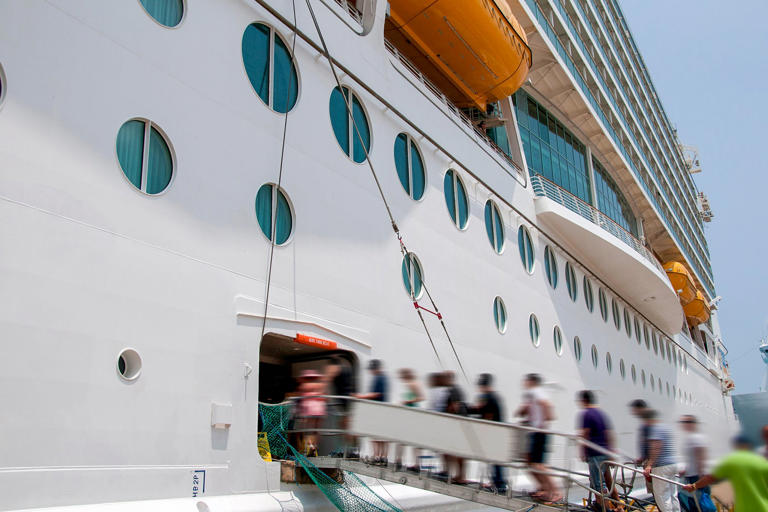
10 Of The Biggest Aircraft Carriers In The World
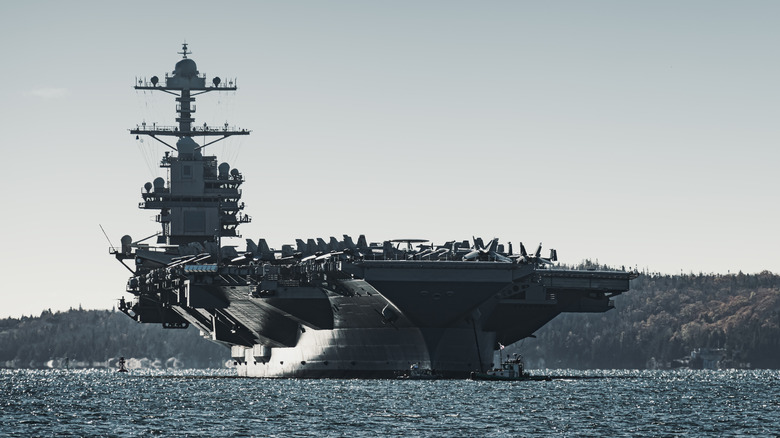
Ever since aircraft started to play a more vital role in warfare, aircraft carriers have become increasingly important. These massive ships are often some of the largest in a navy, and they allow countries to project their air power to any part of the world without establishing permanent air bases. In fact, they effectively operate as mobile floating air bases that can carry dozens of fighter jets and helicopters. That's not even taking into account the thousands of crew and hundreds of troops these vessels also transport across the sea.
Obviously, aircraft carriers have to be pretty large to hold all the equipment, fighters, and helicopters on the flight deck. They also need a runway to provide enough space for these vehicles to take off and land safely. The huge size of aircraft carriers might even make you wonder how they stay afloat .
Even small aircraft carriers dwarf other naval vessels and some of these examples can make other ships seem tiny in comparison. Here are 10 of the biggest aircraft carriers currently in existence.
FS Charles de Gaulle - 42,500 tons
The FS Charles de Gaulle is a French aircraft carrier that acts as the flagship of the French Navy. Named after former general and president Charles de Gaulle, it is a nuclear-powered vessel, making it the only such ship in the world not in the service of the United States Navy. This effectively allows it to remain at sea for an unlimited amount of time, with the only factor limiting its range being the amount of food that it has onboard.
The aircraft carrier was ordered in 1986 and laid down in 1989. However, a lack of funding meant that the project was delayed several times as the price eventually rose to more than 3 billion euros. This included the need to extend the flight deck to safely accommodate aircraft that would land and take-off from the vessel. After finally entering service in 2001, the FS Charles de Gaulle has suffered from a number of technical issues over the last two decades.
The ship can carry more than 1,300 people and several dozen aircraft, ranging from fearsome fighter jets like the Rafale M to larger E-2C Hawkeye twin-turboprops. It can also deploy the AS365F Dauphin Pedro helicopter. The FS Charles de Gaulle stands at 858 feet long, 218 feet high, and has a displacement of 42,500 tons.
INS Vikrant - 45,000 tons
The INS Vikrant may not be as well known as some aircraft carriers from Western powers, but it is still a significant ship. The Indian Navy's fourth aircraft carrier was the first to be built entirely in India, having been laid down at Cochin Shipyard Limited in Kerala. The carrier was ordered in 2004 and saw construction begin five years later in 2009. The launch of the ship followed in 2013 and it entered service in 2022, becoming one of two active aircraft carriers in the Indian Navy.
The size of the INS Vikrant puts it among the largest in the world. It can displace 45,000 tons of water and is capable of transporting up to 30 fixed-wing aircraft and helicopters. That's largely due to the fact that it is 860 feet long and over 190 feet high. Powered by four General Electric LM2500 gas turbines, it can travel at speeds of up to 35 mph and has a range of over 9,000 miles.
Vikrant translates into English from Sanskrit as "courageous" and the ship's motto is: "I defeat those who dare to challenge me." These aren't entirely fanciful boasts. The aircraft carrier is armed with legendary naval aircraft such as the MiG-29K, along with Kamov Ka-31 and MH-60R helicopters. Of course, it also has air defenses of its own, including a stock of Barak 8 surface-to-air missiles and the automated AK-630 rotary cannon.
INS Vikramaditya - 45,400 tons
Unlike India's other aircraft carrier, the INS Vikramaditya was not purpose built for the Indian Navy. In fact, the ship has a long history and dates back to the 1980s, where it was built and put into service by the Soviet Union. Officially entering service in 1987 under the name Baku, the ship was renamed Admiral Gorshkov in 1991 but was decommissioned just five years later due to expensive running costs.
This prompted negotiations with India over the sale of the aircraft carrier, with the Russian government agreeing in 2004 to give India the ship itself for free, although India would pay Russia's Sevmash shipyard nearly a billion dollars to upgrade the ship for the Indian Navy's needs. Cost overruns and several delays meant that the ship did not enter service in the Indian Navy until 2013, by which time the total price of the deal had exceeded $2 billion.
By the time that the INS Vikramaditya entered service, it was significantly larger and heavier than it was as the Baku in the Soviet Navy. Modifications were made to update the overall design of the vessel to allow for new systems and sensors. Meanwhile, the configuration of the flight deck was switched so that it could launch Mikoyan MiG-29K fighters as well as Westland Sea King helicopters, in addition to a number of other aircraft. At 932 feet long, the INS Vikramaditya has a loaded displacement of 45,400 tons, slightly more than the INS Vikrant.
[Featured image by Official U.S. Navy Page via Wikimedia Commons | Cropped and scaled | CC BY 2.0 ]
Admiral Kuznetsov - 58,000 tons
The Admiral Kuznetsov is a Russian aircraft carrier that has been in service since 1991, although the vessel didn't actually become fully operational until four years later in 1995. Commissioned alongside a second carrier in 1981, it was the only ship that was near completion when the Soviet Union was dissolved. It was built in Ukraine and eventually become the flagship of the Russian Navy. However, the Admiral Kuznetsov has been undergoing repairs and upgrades that have kept it out of action since 2018 amid complaints of corruption, incompetence, and significant delays.
This aircraft carrier has a displacement of 58,000 tons but can be configured to have a displacement of just 43,000 tons when it is at its lightest. It can carry Sukhoi Su-33 and MiG-29K fighters in addition to helicopters such as the Ka-31 and Ka-27.
Unlike aircraft carriers employed by other nations, the Admiral Kuznetsov is designed to fulfill a cruiser role. That means it comes equipped with a more powerful armament that includes 12 surface-to-surface missiles and a Klinok air defense missile system. However, the vessel is considered outdated by many and is powered by more archaic engines than most aircraft carriers, which means it leaves a large black smoke trail behind it when it sails.
Liaoning - 60,000 tons
The Liaoning is a Chinese aircraft carrier that is currently in service in the People's Liberation Army Navy, although it was not originally built for China. It was laid down in 1985 and was under construction alongside the Admiral Kuznetsov in Ukraine. Then known as the Riga, it was further behind its sister and not yet completed by the time of the dissolution of the Soviet Union in 1991. Ukrainian authorities stripped down the hull and eventually sold the vessel to China for use as a training ship, although it has since been converted into a active combat ship.
The upgrades and updates applied to the Liaoning to make it combat-ready have improved its capabilities while also increasing its overall weight and size. This means it is notably larger than its sister ship that is still used by the Russian Navy, with a maximum displacement of 60,000 tons. However, it lacks the firepower of the Admiral Kuznetso, as it carries no cruise missiles or surface-to-surface weapons. Instead, it relies on its complement of Shenyang J-15 fighters to provide ground attack, as well as several different types of helicopters.
HMS Prince of Wales - 65,000 tons
Although the United Kingdom is not the naval powerhouse it once was, the Royal Navy is still a very prominent fleet — one that fields some of the most powerful navy destroyers in the world . It makes some sense, then, that it has aircraft carriers that are among the largest you can find on the globe outside of the United States and China. The HMS Prince of Wales is the second of two Queen Elizabeth-class aircraft carriers and began construction in 2011 after a standoff between the British government and BAE Systems.
The ship was nearly cancelled in 2010, when a government report found that having two aircraft carriers in the Royal navy was unnecessary. Prime Minister David Cameron only wanted to commit to building one aircraft carrier of this type but was persuaded to continue with the original plan after it was discovered cancelling the contract would lead to massive job losses and excessive cancellation fees. In fact, it would be more expensive to not move ahead with the project than it would be to actually build the ship.
HMS Prince of Wales utilizes a ski-jump ramp that is designed to launch aircraft such as the F-35B Lightning II variant and the AgustaWestland Merlin helicopter. It is almost 1,000 feet in length and displaces 65,000 tons at its maximum load.
HMS Queen Elizabeth - 65,000 tons
The fleet flagship of the Royal Navy is the HMS Queen Elizabeth. The sister ship to the HMS Prince of Wales, it bears the name of Queen Elizabeth I and entered service in 2017 after being first laid down in 2009 and then launched in 2014.
The HMS Queen Elizabeth is capable of carrying up to a maximum of 65 aircraft and helicopters, although will usually carry far fewer than this during normal operations. The aircraft on the flight deck will include up to 36 F-35B Lightning II fighter jets along with a variety of helicopters such as Chinooks, Apache AH MK1, and Merlin HM2s. That's in addition to the crew of some 1,600 that the ship can carry, along with 250 Royal Marines. The vessel itself has a range of 10,000 nautical miles and can travel at speeds of up to 37 mph.
The HMS Queen Elizabeth is equal in size to the HMS Prince of Wales. It is 932 feet long, has a draft of 36 feet, and can displace a total of 65,000 tons when fully loaded. There are also a total of nine decks in addition to the flight deck, providing a large amount of space for equipment and the crew.
Shandong - 70,000 tons
The Liaoning is not the only aircraft carrier in the People's Liberation Army Navy as the Chinese military also has the Shandong, a ship built by China rather than being purchased from a third party. That said, the Shandong might look familiar as it is simply a modified version of the Kuznetsov-class aircraft carrier that includes both the Admiral Kuznetsov and the Liaoning. Construction began in 2013 when the ship was laid down and it is the work of the Dalian Shipbuilding Industry. China kept the existence of the project a secret during much of its construction, only providing official confirmation that it was building an aircraft carrier in 2015.
The Shandong stands at a little over 1,000 feet long and can displace between 60,000 and 70,000 tons depending on its load and configuration. The larger overall size of the Shandong compared to the Liaoning is down to the fact that the more recent aircraft carrier is more dedicated to flight operations. This allows it to carry more aircraft than its predecessor, with room for up to 44 jet fighters and helicopters on the flight deck, including Shenyang J-15 fighters and Changhe Z-18s. There are also suggestions that it may also be able to deploy the Shenyang FC-31 stealth fighter, otherwise known as the J-35.
Nimitz Class - 97,000 tons
Compared to other nations, the United States has a far larger fleet of aircraft carriers. Listing individual ships would mean that the entire article would be taken up with aircraft carriers from a single class, all of which have essentially the same design and appearance. The Nimitz-class is a good example of this, with the U.S. currently having 10 active vessels of this class in operation. All of these vessels were built by the Newport News Shipbuilding Company, with construction beginning with the USS Nimitz in 1968 and ending with the completion of the USS George H.W. Bush in 2006.
The Nimitz-class utilizes nuclear power in the form of water reactors for propulsion and was designed to replace both the Kitty Hawk-class and the Enterprise-class. There are two A4W nuclear reactors that drive steam turbines, allowing the aircraft carrier to reach a speed of 35 mph despite its huge size. The ship also makes use of arrestor wires and steam catapults to launch fighter jets and assist them with landing.
The Nimitz-class aircraft carriers can house a large number of aircraft. These range from F/A-18E or F Super Hornets, F/A-18C Hornets, EA-18G Growlers, C-2 Greyhounds, and HH-60H Seahawks. The ships are almost 1,100 feet long, have a draft of 37 feet, and displace an estimated 97,000 tons.
USS Gerald R. Ford - 100,000 tons
Prior to the launch of the USS Gerald R. Ford, the Nimitz-class aircraft carriers were the largest naval ships in the world . That all changed in 2017 when this Gerald R. Ford-class was commissioned and entered active service. Estimated to have cost $12.9 billion to construct, along with almost $5 billion of research and development for the entire class, the USS Gerald R. Ford is the first of 10 planned aircraft carriers that will eventually replace the Nimitz-class carriers already in service. That means the entire project will cost more than $120 billion.
In many ways, the Gerald R. Ford-class aircraft carriers are similar to the Nimitz-class. They have the same basic shape and structure but with a variety of upgrades and updates to sensors, systems, and equipment to make them suitable for modern warfare. These include advanced arresting gear, an electromagnetic aircraft launch system, and an updated version of the RIM-162 Evolved SeaSparrow Missile launcher.
The USS Gerald R. Ford is 1,106 feet long, 250 feet tall, and has 25 decks. It can also displace more than 100,000 tons. Like its predecessor, this aircraft carrier is nuclear powered with two Bechtel A1B nuclear reactors. This allows the ship to carry up to 75 aircraft, including everything from F-35 Joint Strike Fighters to F/A-18E Super Hornets.

COMMENTS
MV China Star (中华之星) is the world's largest ship with a SWATH design, and the only twin-hull cruise ship ever built. History. Built as the Radisson Diamond, the ship was built for Diamond Cruise, a conglomerate of several Finnish banks and the UKL-based Carlson Companies (the parent company of Radisson Cruises and Hotels).
SWATH meaning Small Waterplane Area Twin Hull. The design resembles that of a catamaran, but there are differences and thats why calling this ship a catamaran is not right. ... In 1993, Diamond Cruise and Seven Seas Cruises merged and the new company was called Radisson Seven Seas Cruises. All ships of both companies kept their own names. Her ...
The twin hulls (blue) remain completely submerged. A small waterplane area twin hull, better known by the acronym SWATH, is a catamaran design that minimizes hull cross section area at the sea's surface. Minimizing the ship's volume near the surface area of the sea, where wave energy is located, minimizes a vessel's response to sea state, even ...
She was delivered to Diamond Cruise Company, Helsinki in 1992 and was managed by the Radisson Hotel chain. Her building cost was $250 mio. Her crew numbered 186 and her passenger capacity was 350 guests in 172 staterooms. Two of these were 550-square-foot suites with private verandas selling for $900 a day per person.
Radisson Diamond was built by MEYER TURKU with yard number 310. As the world's first ever cruise ship with a small-waterplane-area twin hull, it was seen as something really special back in 1992. This hull design minimises the vessel's sensitivity to wave action. And with a tonnage measurement of 20,295 GT, it's also the largest ship of ...
Videos. Hull Design: Engineering a Smoother Ride. Moving a cruise ship through the ocean takes more than just a powerful engine, it also takes sophisticated engineering and construction. From the biggest innovations to the smallest details, see how the hull design of Oasis of the Seas makes for a smooth ride.
HULL DESIGN. The 60m twin-hull ship is designed to minimise the hull cross section area at the sea's surface. The greatest benefit of this is that the waves have much less of an effect on the vessel, so it does not react as much to a heavy sea state. This improved seakeeping characteristics of the SWATH concept means there is a much more ...
A Formula 16 beachable catamaran Powered catamaran passenger ferry at Salem, Massachusetts, United States. A catamaran (/ ˌ k æ t ə m ə ˈ r æ n /) (informally, a "cat") is a watercraft with two parallel hulls of equal size. The distance between a catamaran's hulls imparts resistance to rolling and overturning. Catamarans typically have less hull volume, smaller displacement, and ...
Ceremonies for the 354- foot, twin-hull luxury ship were held at the Greenwich Buoy on the River Thames. "Greenwich is where world time begins, and with the christening of this ship, we are celebrating the beginning of a new time in the world's cruise industry ," said Christian Aspegren, president and cofounder of Diamond Cruise Inc.
A SWATH ship is the abbreviated form of the word 'Small Waterplane Area Twin Hull' ship. Swath ships are designed in such a way that they have two or dual hulls instead of the conventional single hull. Technically, a swath ship is a type of a catamaran. ... cruise as well as cargo ships and are also used as army and research vessels. The ...
Crew. 20 plus 28 scientists. RV Kilo Moana ( AGOR-26) is a small waterplane area twin hull (SWATH) oceanographic research ship owned by the US Navy and operated by the University of Hawaii as a part of the University-National Oceanographic Laboratory System (UNOLS) fleet. [1] She was designed to operate in coastal and blue water areas.
MV China Star is the world's largest ship with a SWATH design, and the only twin-hull cruise ship ever built.It has operated in Hong Kong as the gambling ship China Star for Asia Cruises. [This 350-passenger all-balcony luxury cruise ship was the largest SWATH ship in the world when it was built, displacing more than 20,000 tons.Originally known as the Radisson Diamond, the ship was built for ...
The 18 400 gt RADISSON DIAMOND built by Finnyards OY's Rauma shipyard for Diamond Cruise Ltd., is the worlds first twin-hull cruise ship. The vessel was designed to have minimised motion and noise and vibration characteristics. Principal particulars are given. See also abstract nos 91092019 and 92081767 and the following abstract.
Steel twin screw motor vessel built in 1992 by Finnyards, Rauma, Finland (Yard No 310) as a (SWATH, Small-waterplane-area twin hull)) Passenger Ship. Technical Data. Length: 131.20 m (overall) 119.71 m (between perpendiculars) Breadth: 32.00 m Depth: 15.50 m Draught: 8.0 m Tonnage: 20295 - gross/6546 - net/1300t - 1676t deadweight
Fit For a Queen: Hebridean Princess. Kruzof Explorer: The Ex-Bering Sea Crabber. Ocean Endeavour: The Former Soviet Union Cruise Ferry. Swell: Maple Leaf Adventures' Cozy 1912 Tugboat. 50 Years ...
All SWATH@A&R Small Waterplane Area Twin Hull (SWATH), or simply a twin hull ship design that minimises hull cross section area at the sea's surface, stands for a special form of hulls in ships that are particularly stable in high seas and at high speeds. learn more SWASH@A&R Small Waterplane Area Single Hull (SWASH), a cigar formed single engine hull with narrow waterline, offers increased ...
The hull of a ship is the watertight outer skin covering the lower portion of the vessel. Modern cruise ships have hulls consisting of heavy steel panels welded together. Effective July 1st.
Diamond Cruise Ltd. and Radisson Hotels International have announced that the second twin-hulled cruise ship, the Radisson Ruby, has now been contracted to be built by Rauma Yards of Finland. While the sistership, the Radisson Diamond, is being constructed for $125 million and will be launched in May, 1992, the…
I've heard such wonderful things from many of you who had the good fortune to sail on the Diamond. As you know, she was a gambling ship in Hong Kong for a while and was put up for sale. According to the following article, she will once again be a passenger ship:) New Chinese Cruise Line to Start-...
Low drag, a consequence of the specially designed twin-hull, makes the catamaran glide gracefully on the water while optimising efficiency and low fuel consumption. ... 10 Most Expensive Cruise Ships; Top 10 Biggest LNG Ships . About Author. Zahra is an alumna of Miranda House, University of Delhi. She is an avid writer, possessing immaculate ...
Check out the different ship-hull types and vessel hulls in this article. ... They have relatively fuller hull forms and are more acceptable for cruises, containerships, fighter vessels, etc. ... SWATH stands for Small Waterplane Area Twin Hull. It is a unique, modern twin-hull form but quite different from traditional catamaran configurations. ...
The Queen Mary 2 Isn't the most kid-friendly cruise ship, but families do hop aboard, particularly during summer and the end-of-year holiday season. Various sections of the ship are designed for ...
Even with a season that only runs from April through October, Alaska draws roughly 40 big cruise ships and dozens of smaller cruise vessels each year, making it one of the most popular cruise destinations in the world after the Caribbean and Europe. The best Alaska cruises range from off-the-beaten-path voyages on vessels carrying fewer than 100 passengers to weeklong jaunts through the Inside ...
Their catamaran-style hull increases stability, while twin diesel engines and twin propellers allow these "mega" lifeboats to move at speeds of up to 6 knots. ... Cruise ships have also been ...
The ship can carry more than 1,300 people and several dozen aircraft, ranging from fearsome fighter jets like the Rafale M to larger E-2C Hawkeye twin-turboprops. It can also deploy the AS365F ...
Design Hull. The ship has a catamaran (twin hull) design with sharp angles to give it a more stealthy design. Its design has been compared to the Chinese Type 22 missile boat and the Taiwanese Tuo Chiang class.According to Iranian officials the ship's hull is made of aluminium instead of steel which decreases the weight and is a new innovation in the Iranian shipbuilding industry.